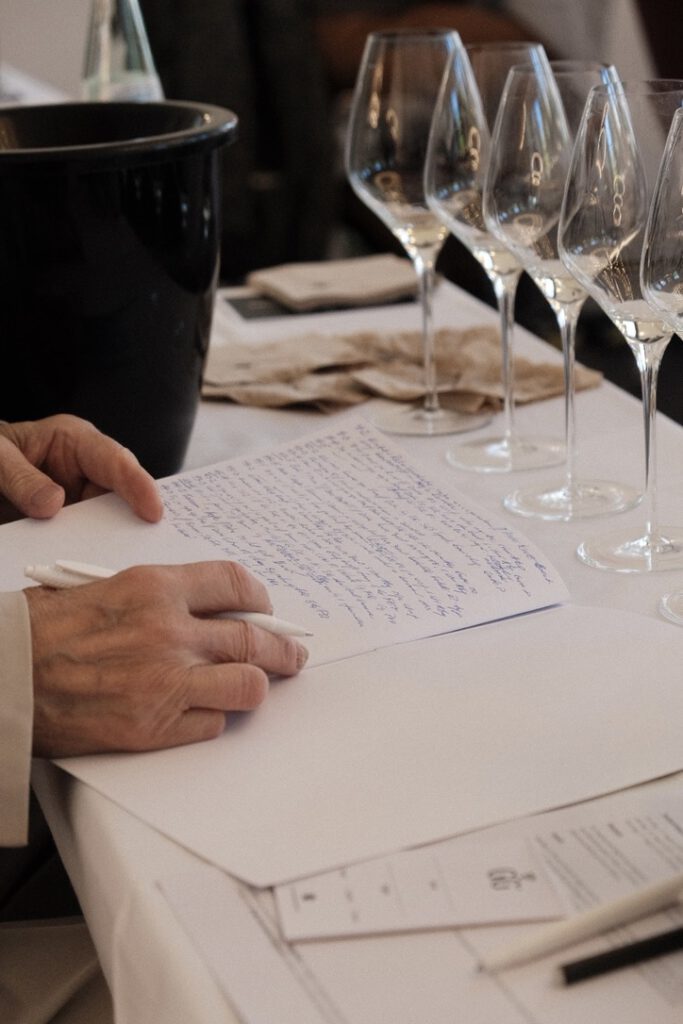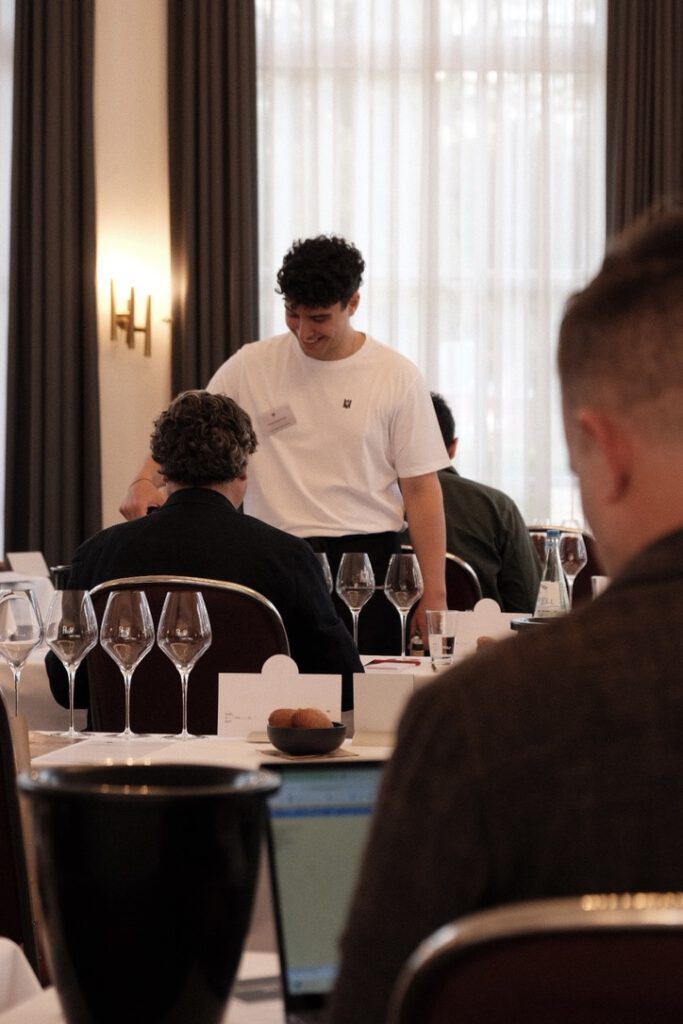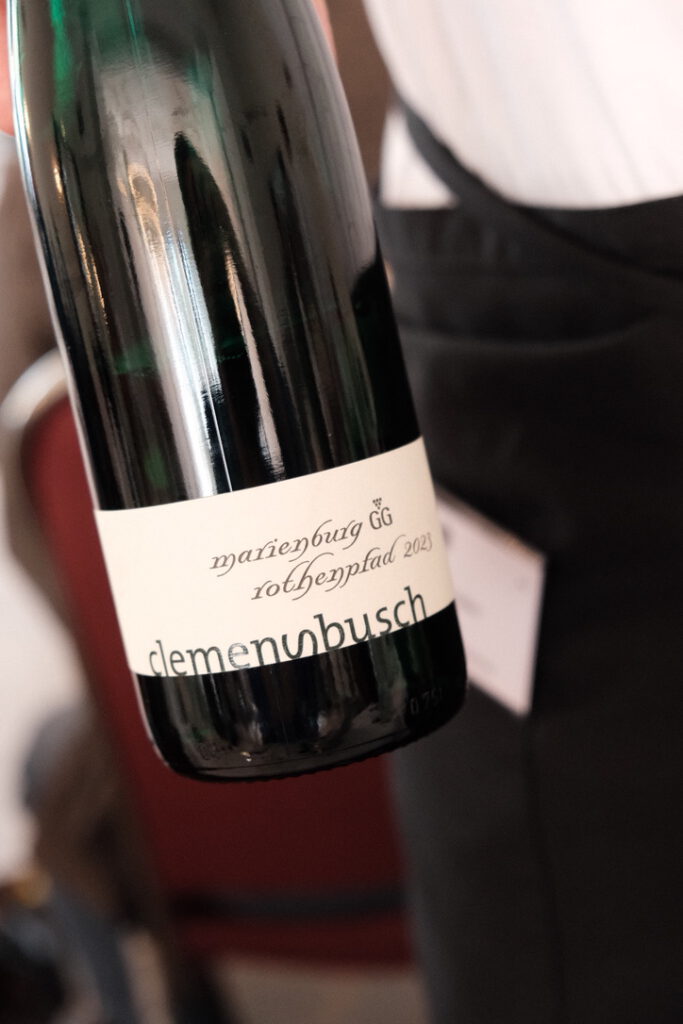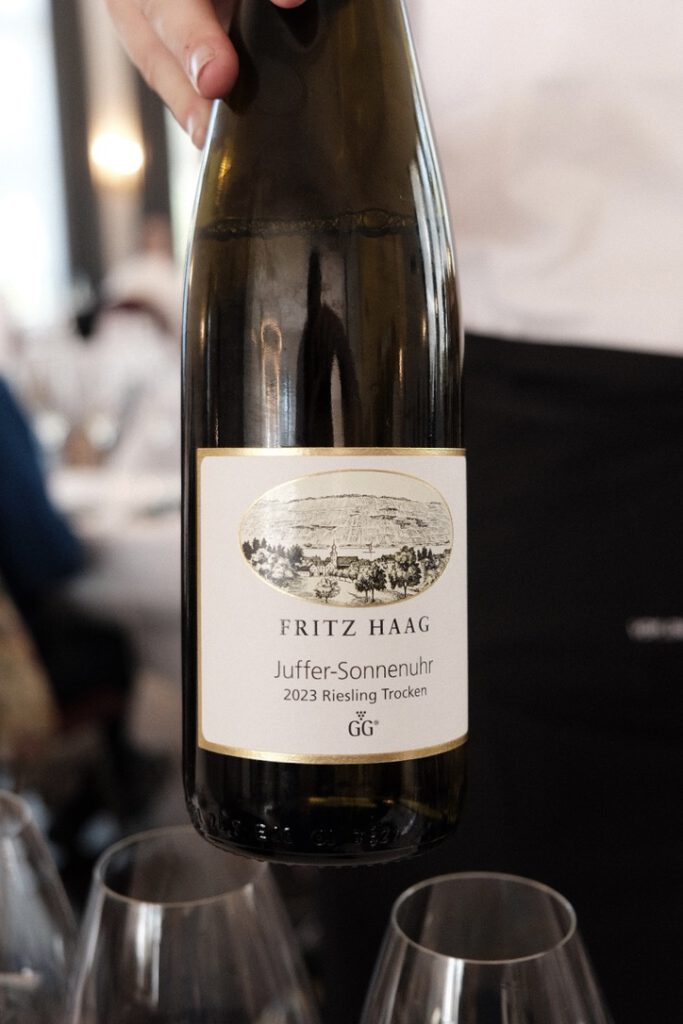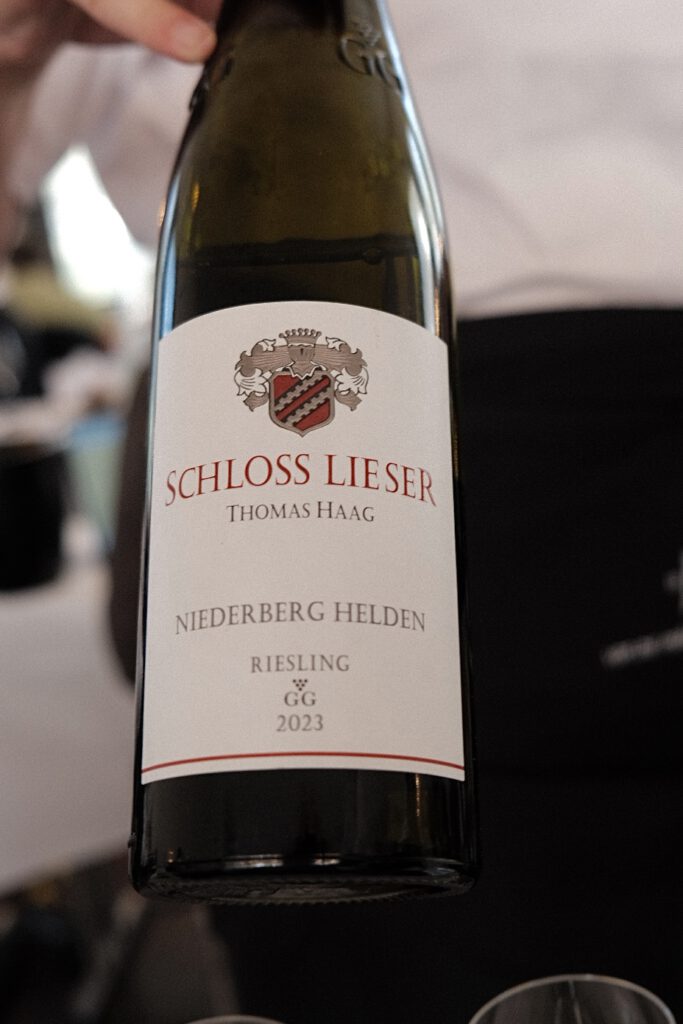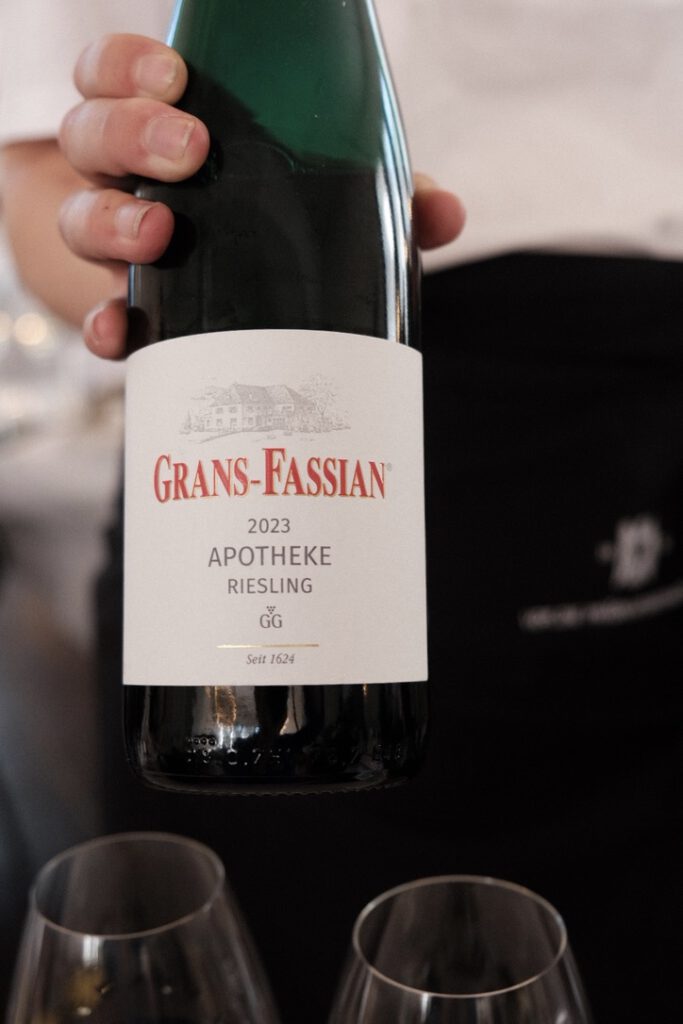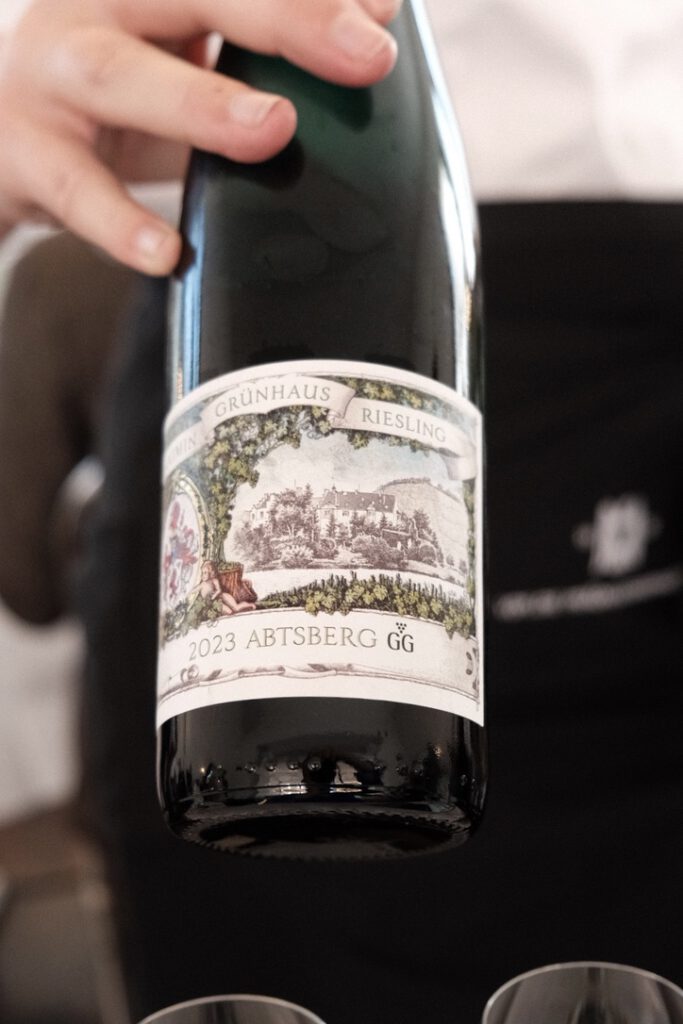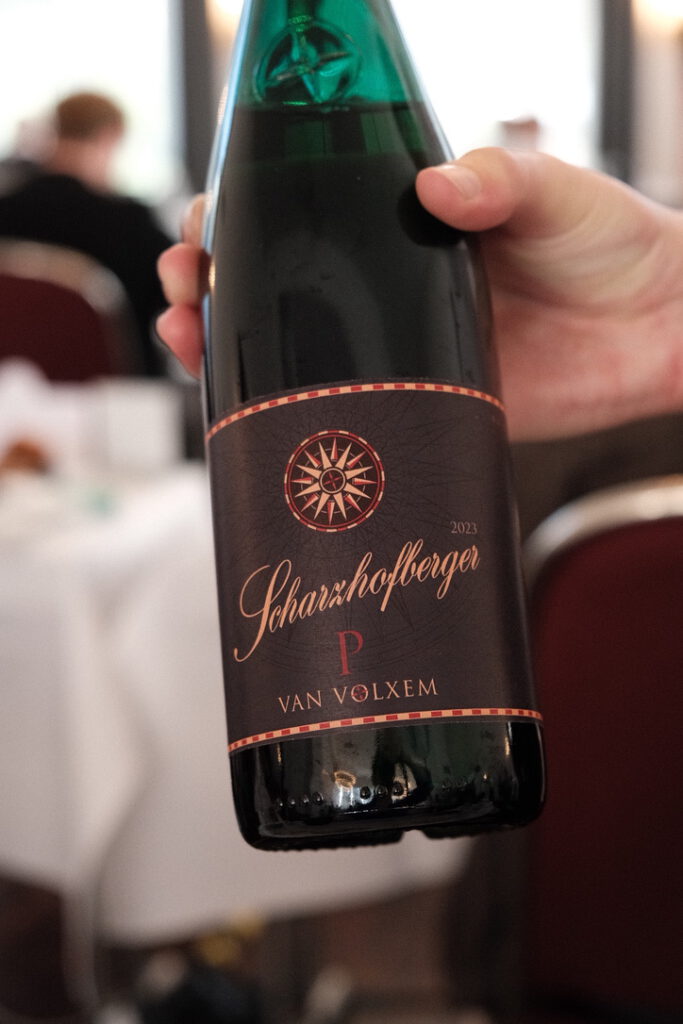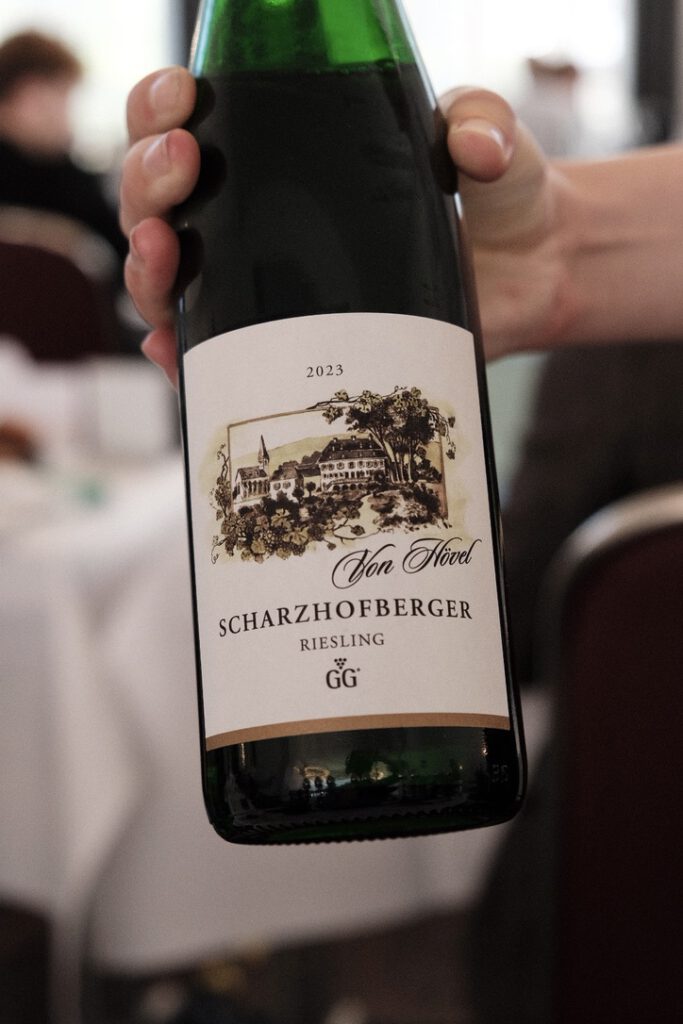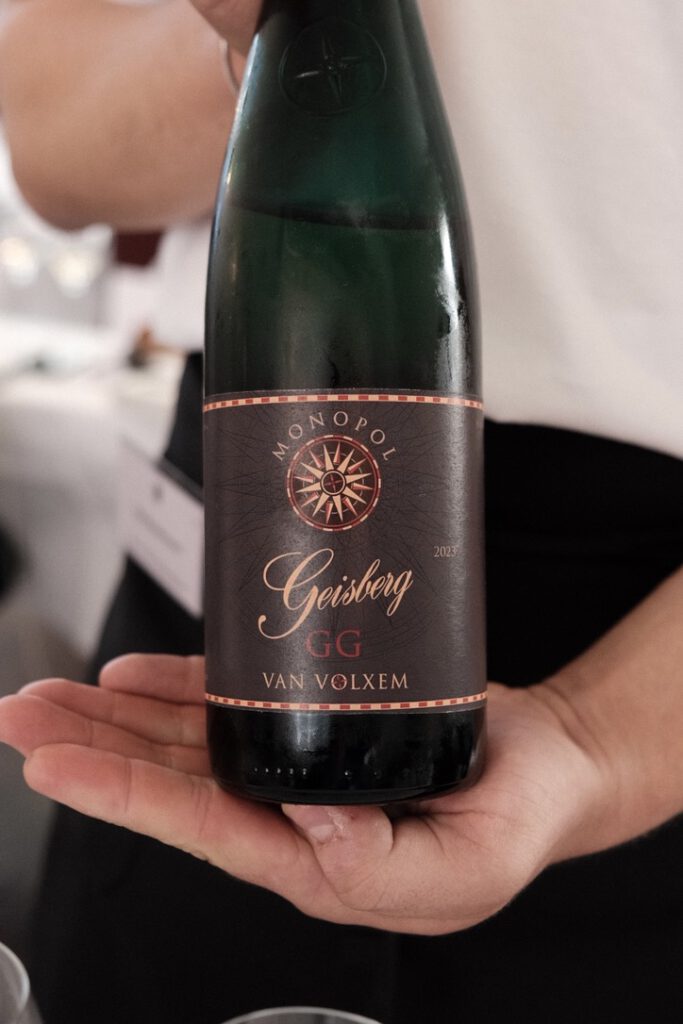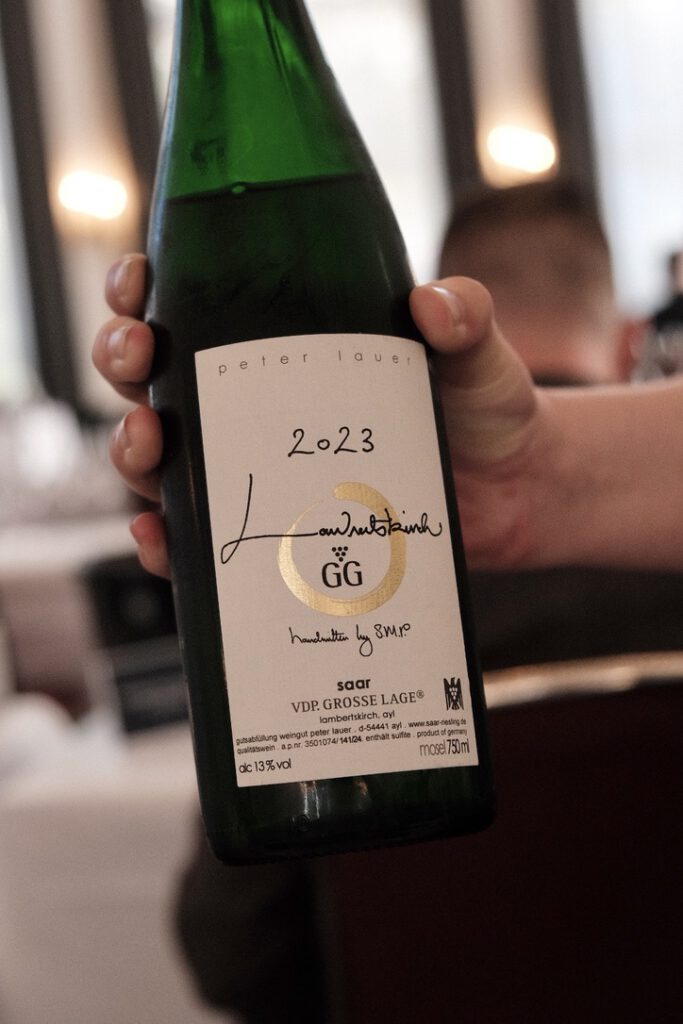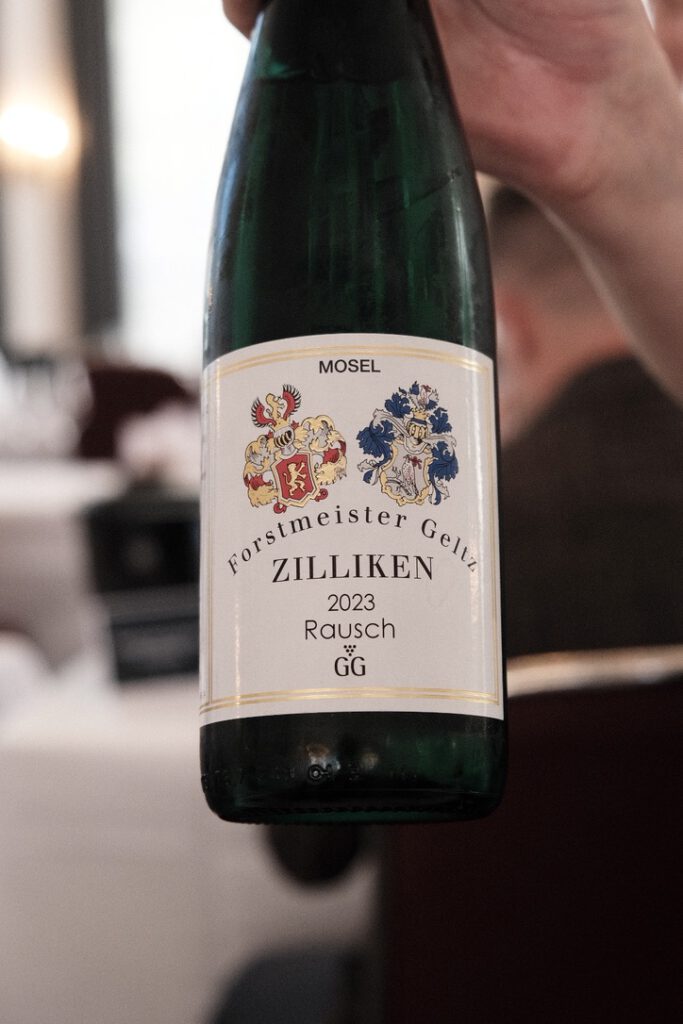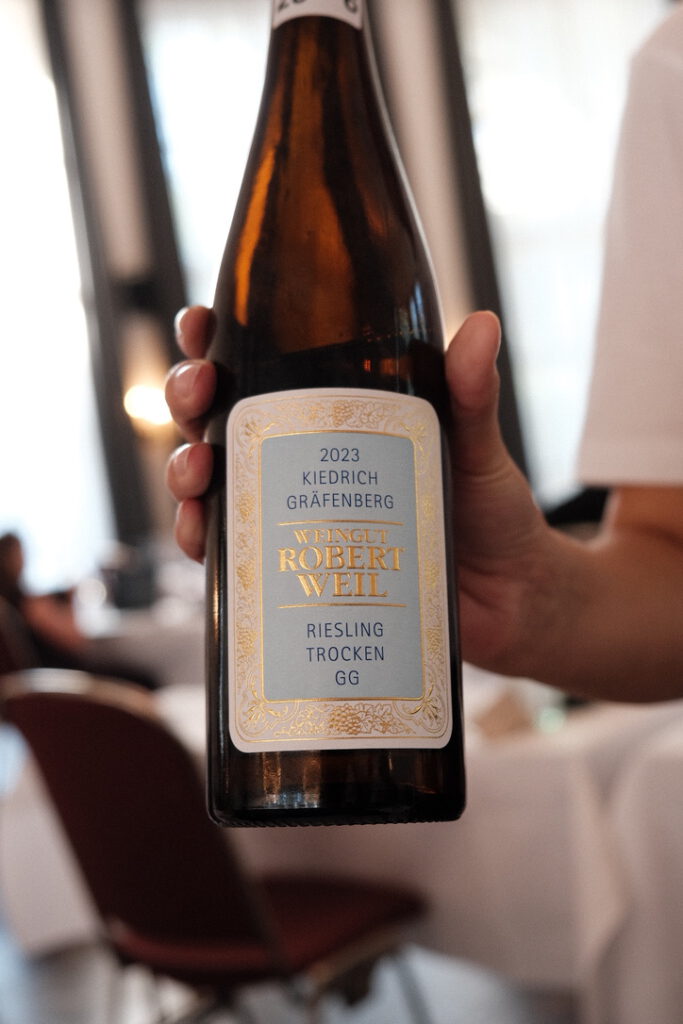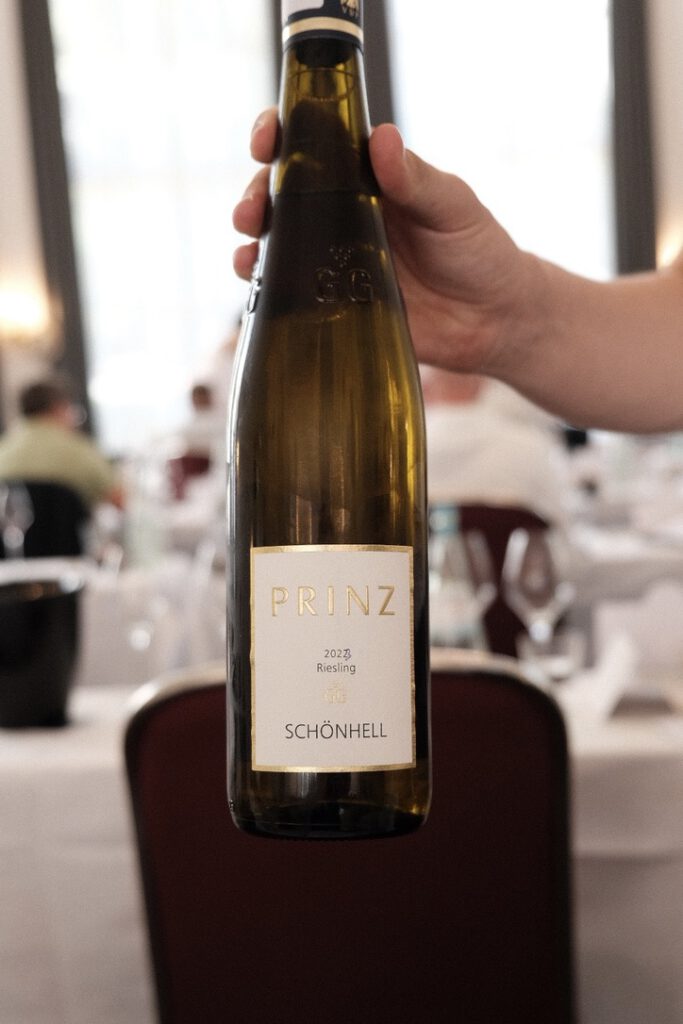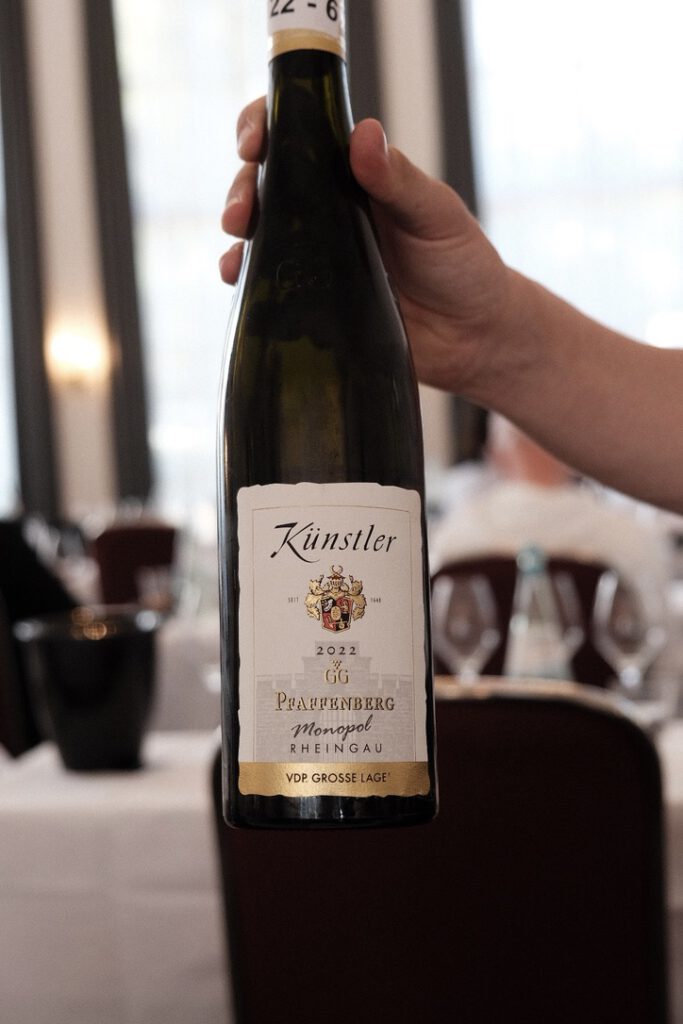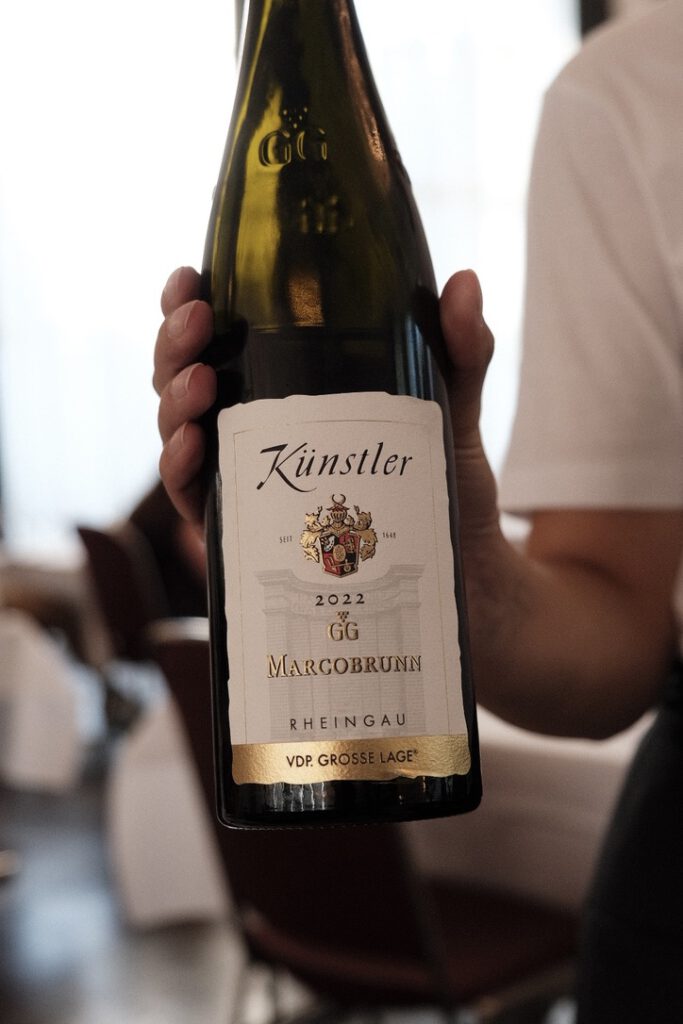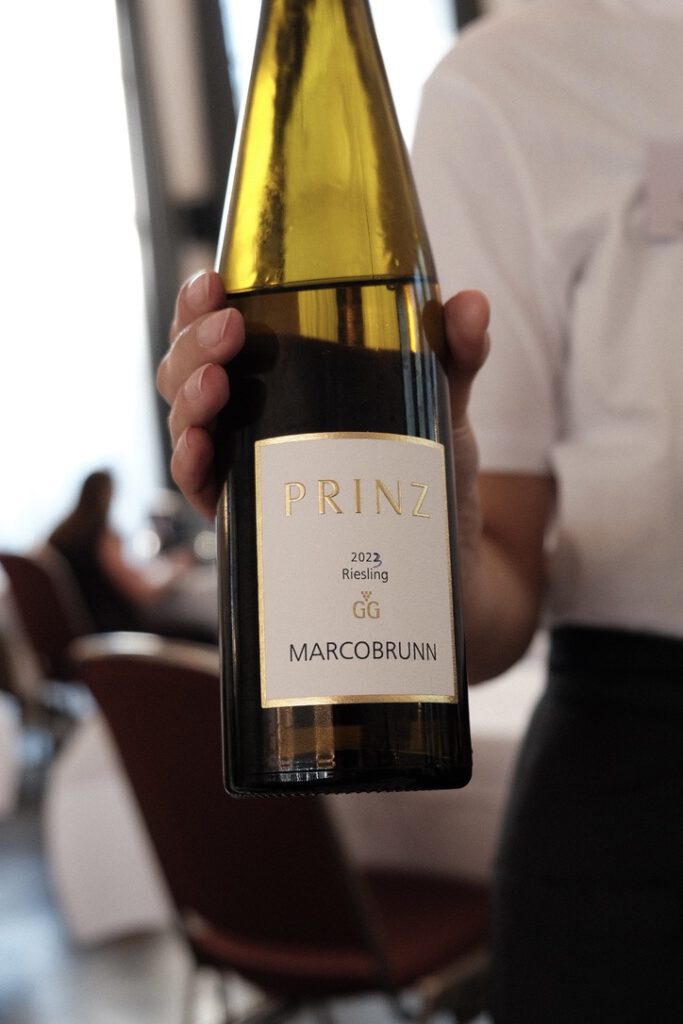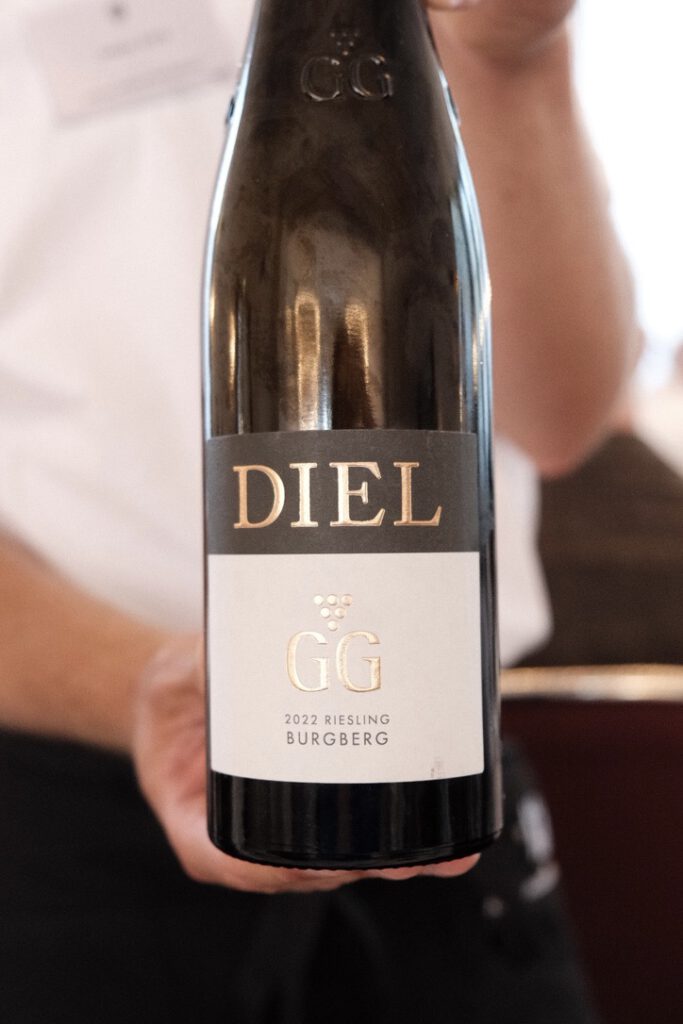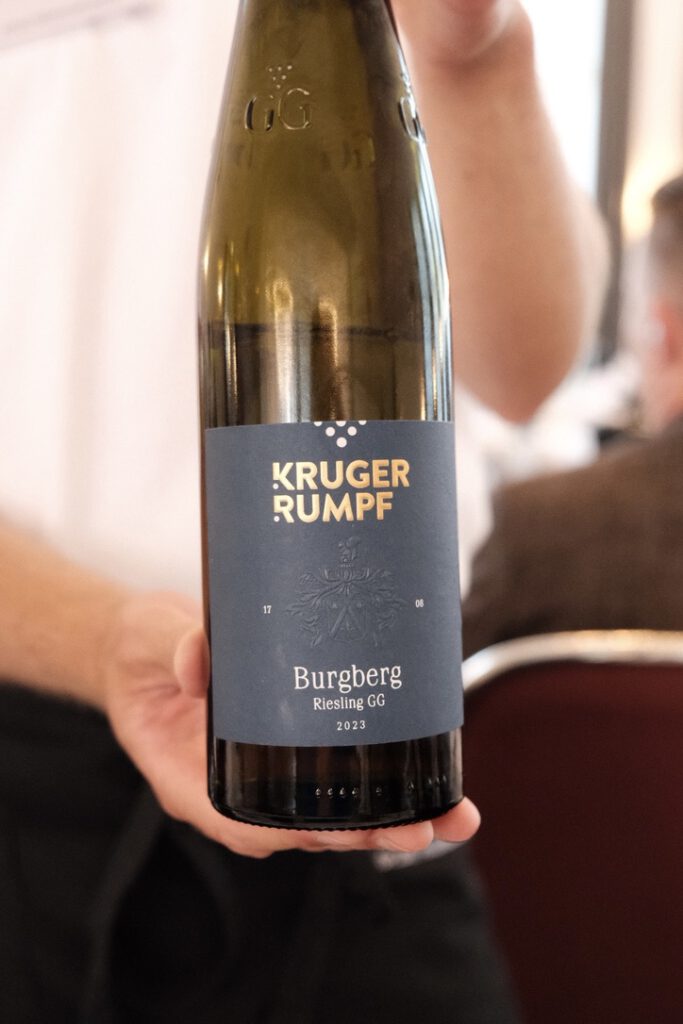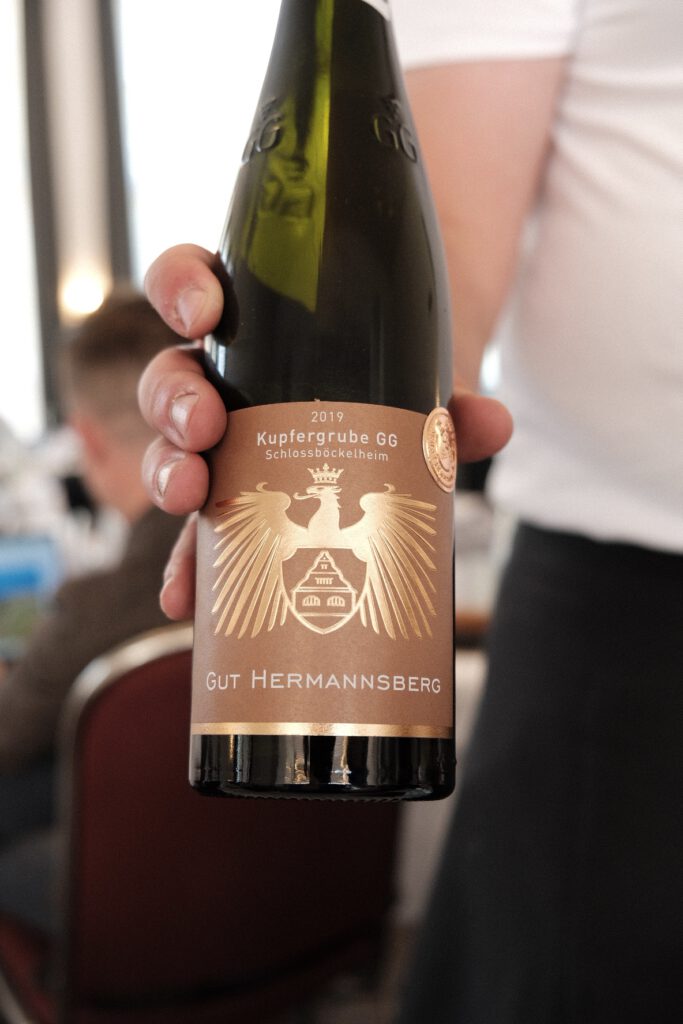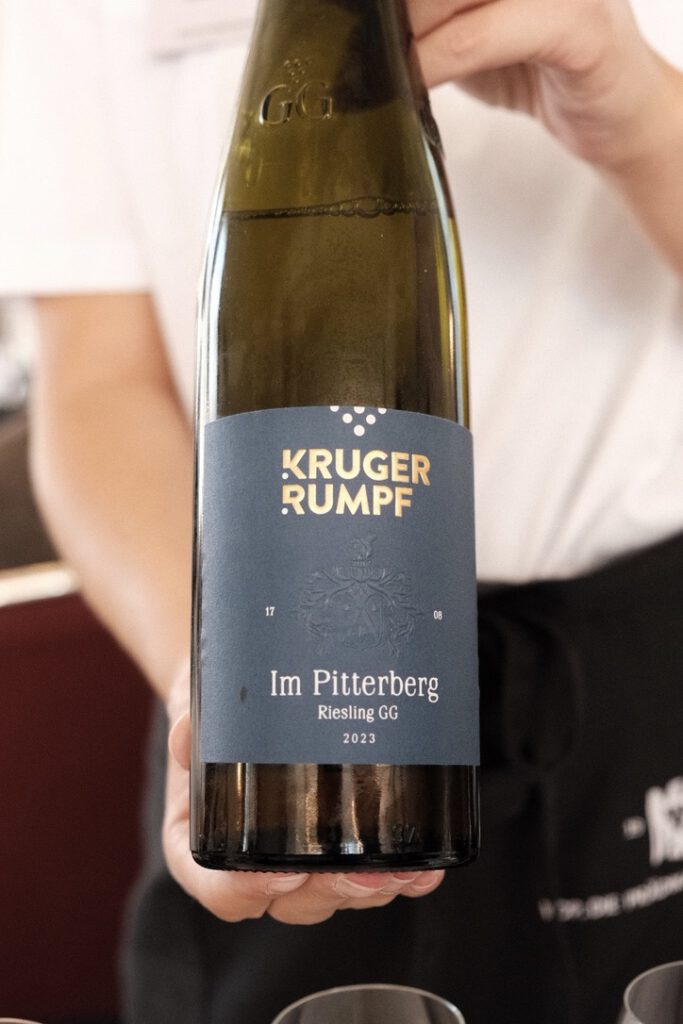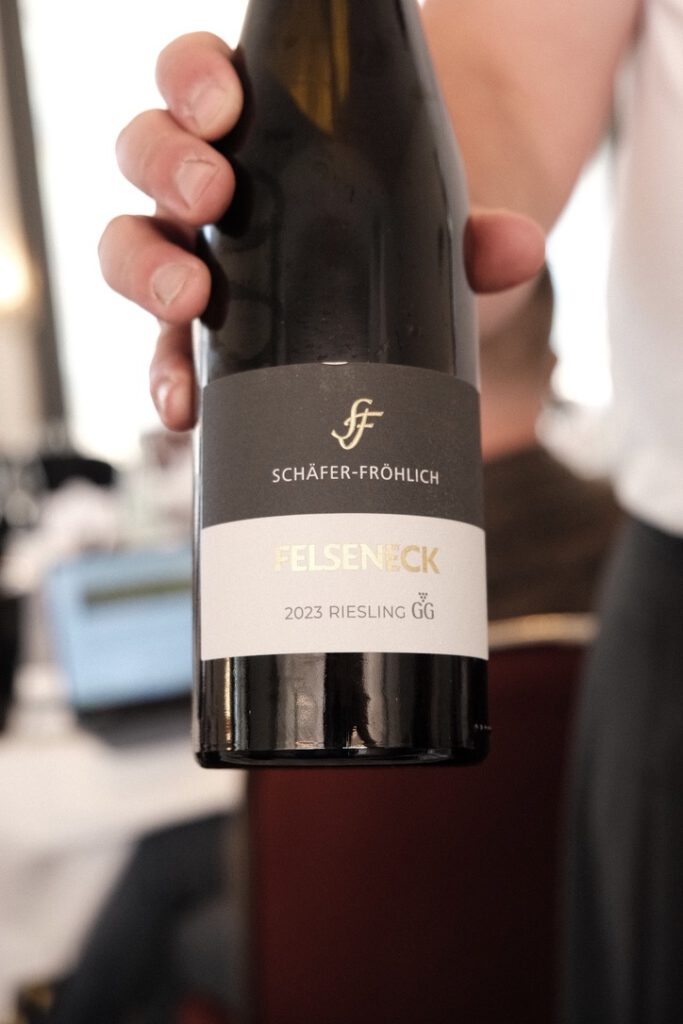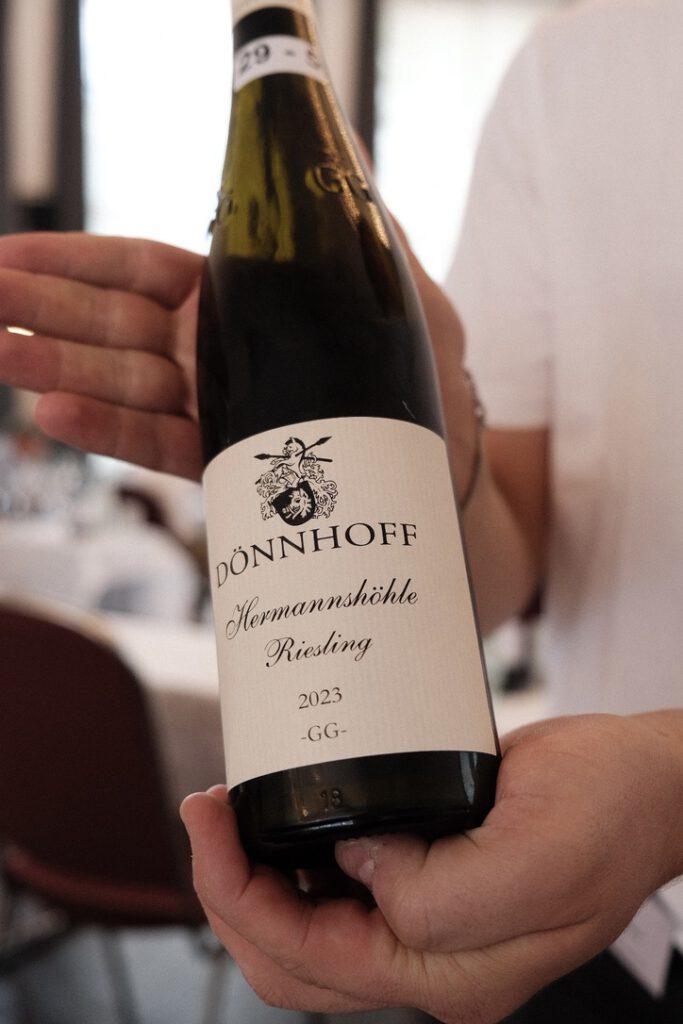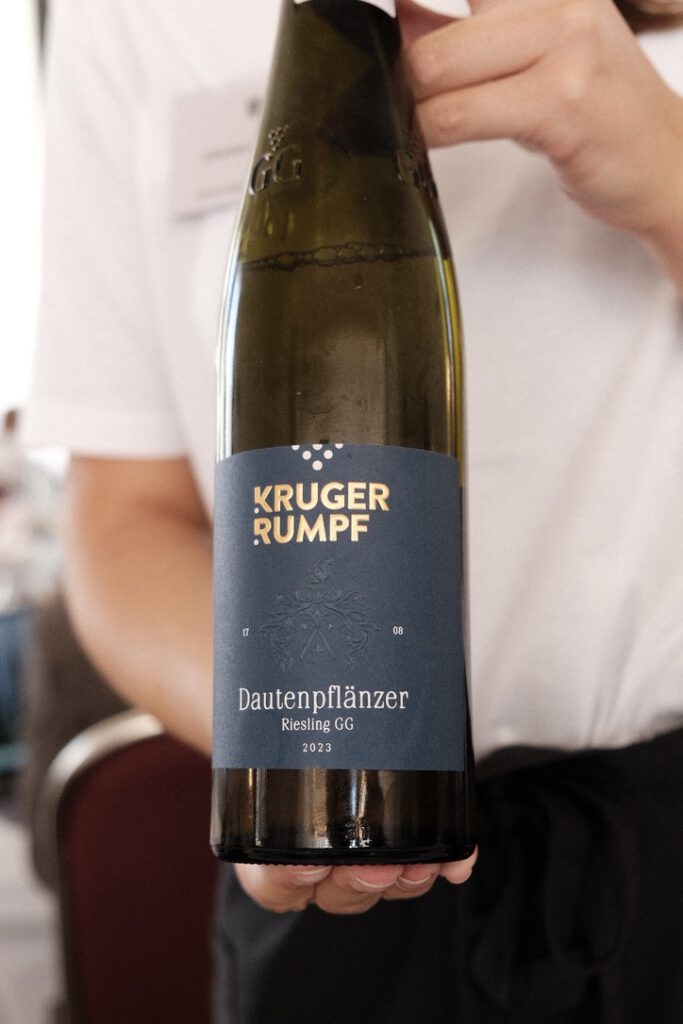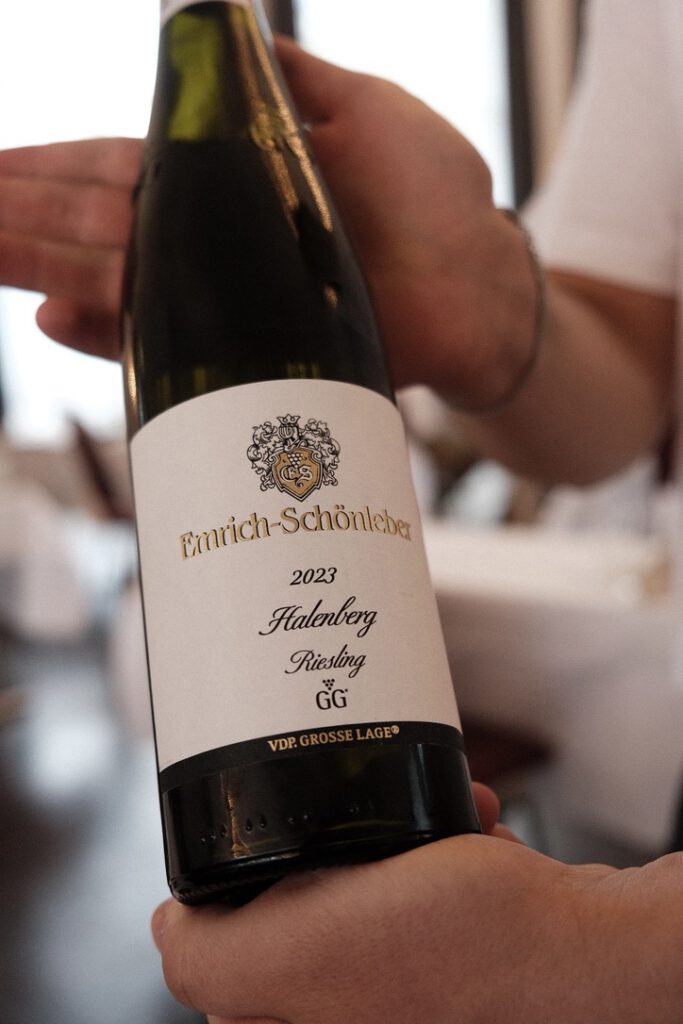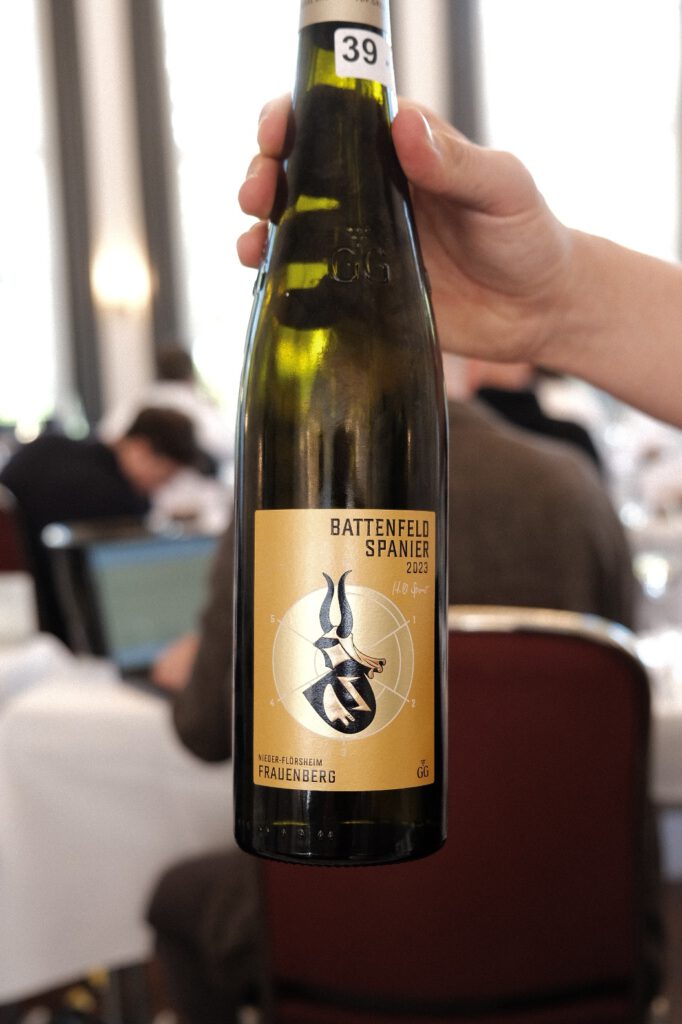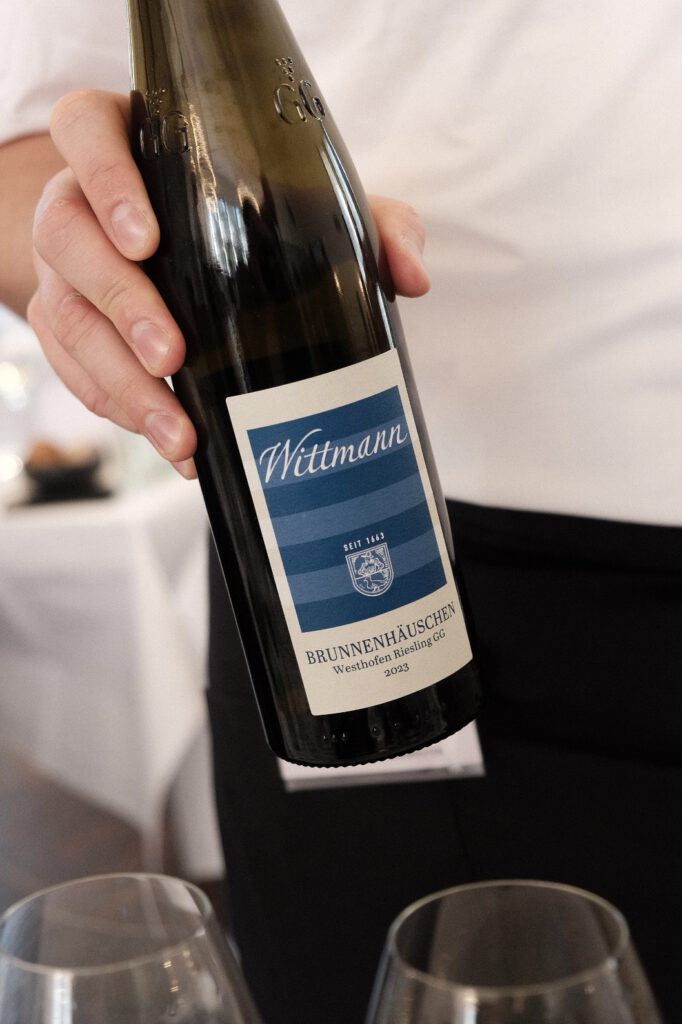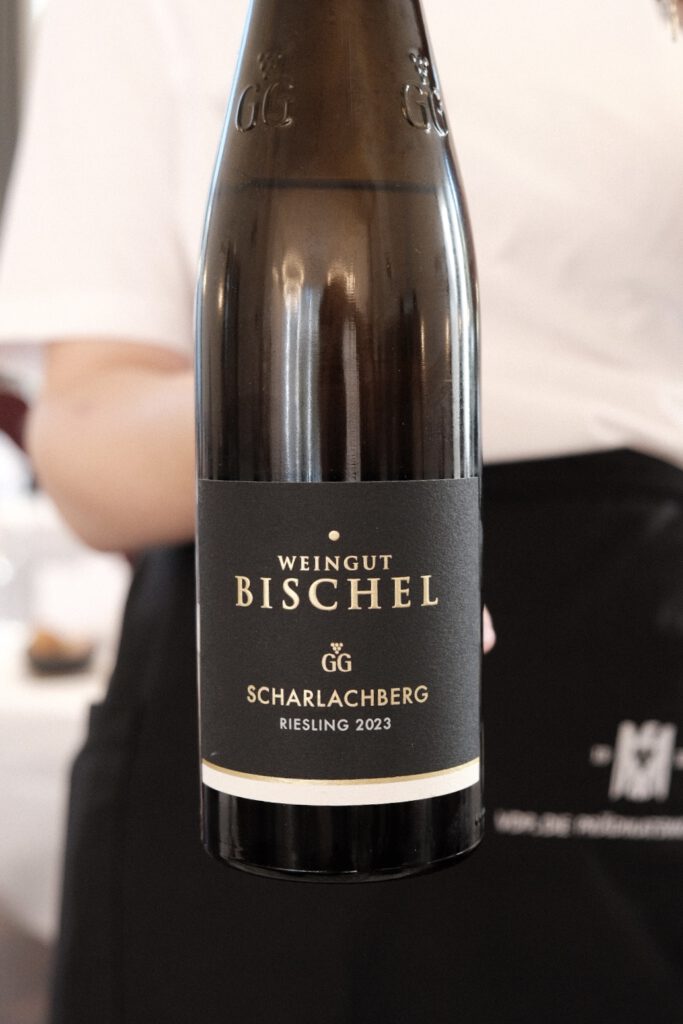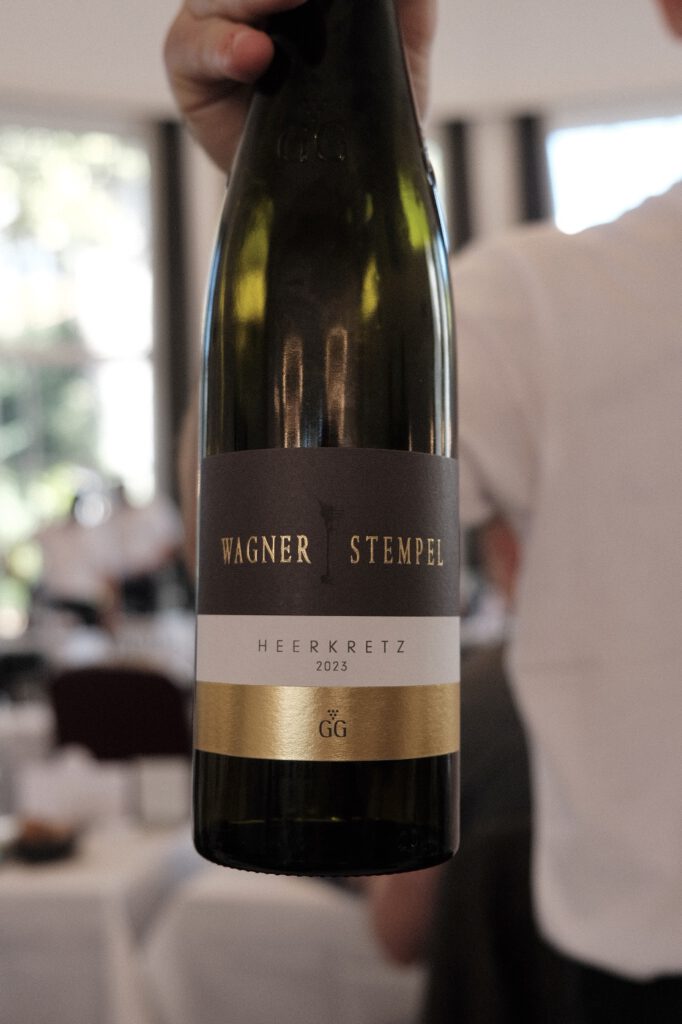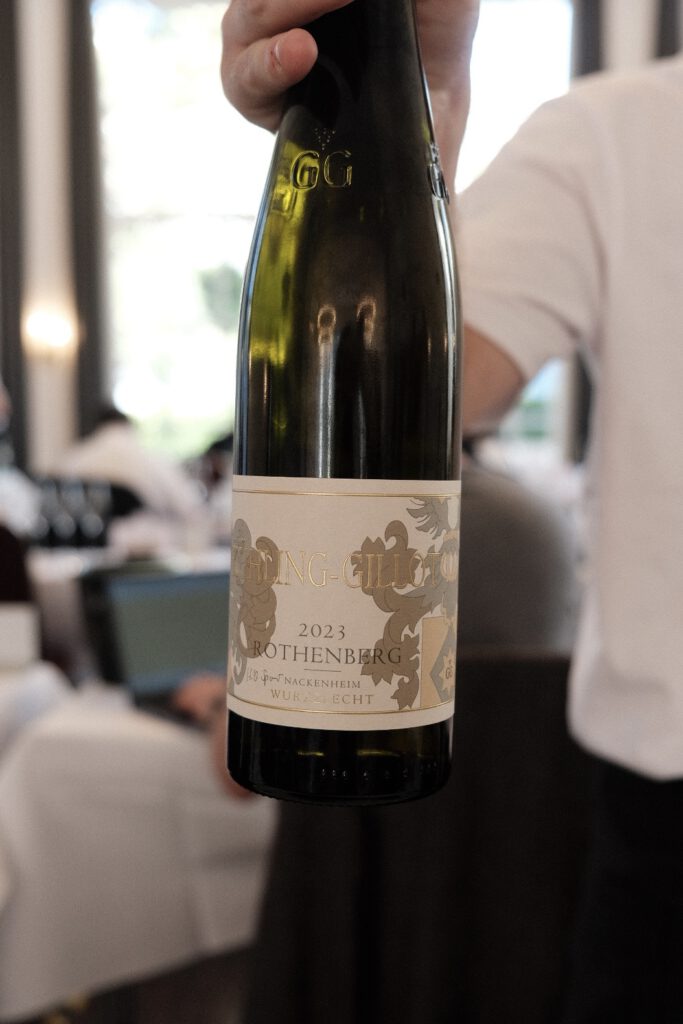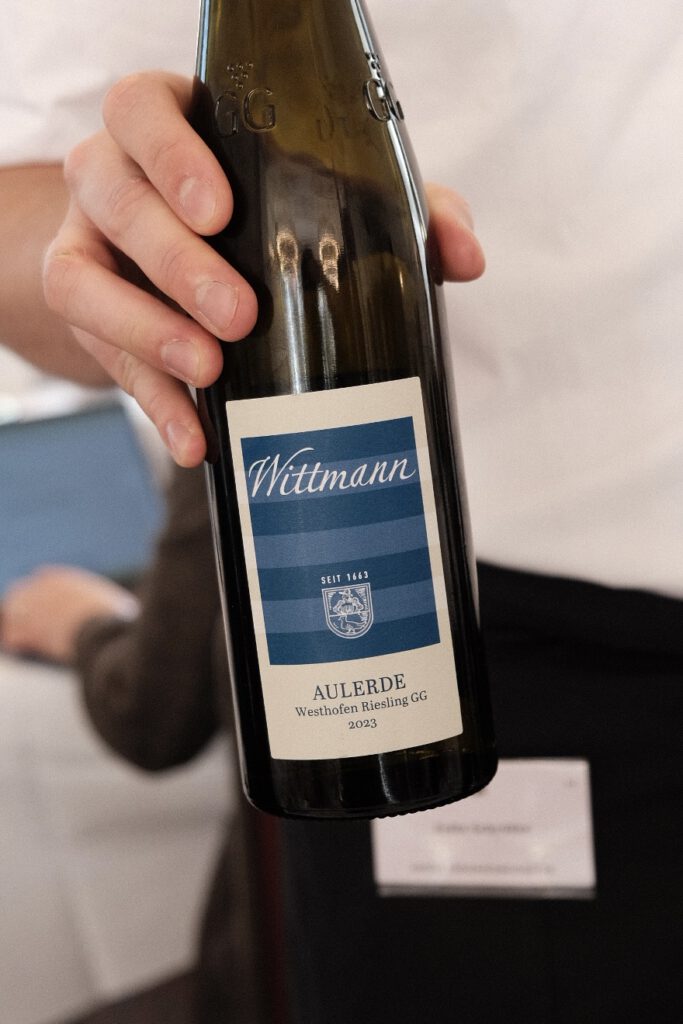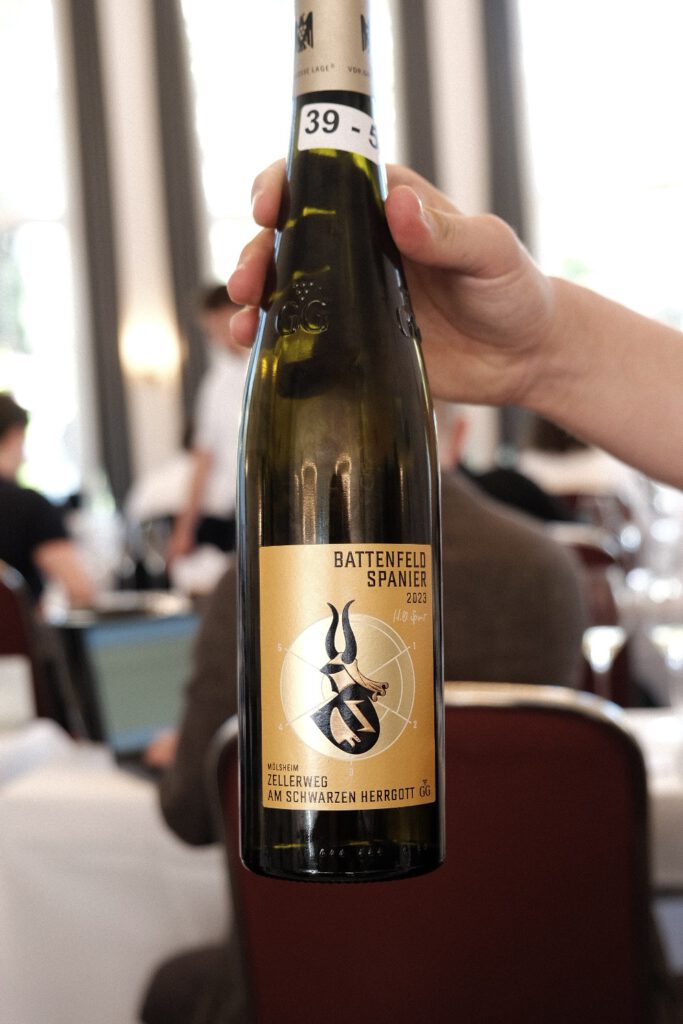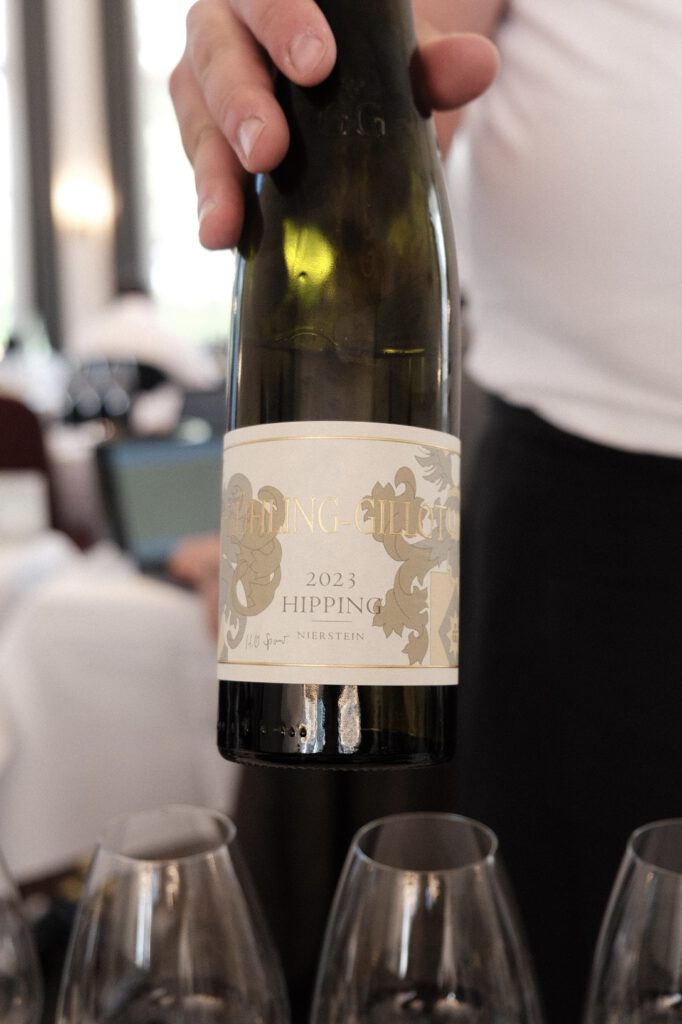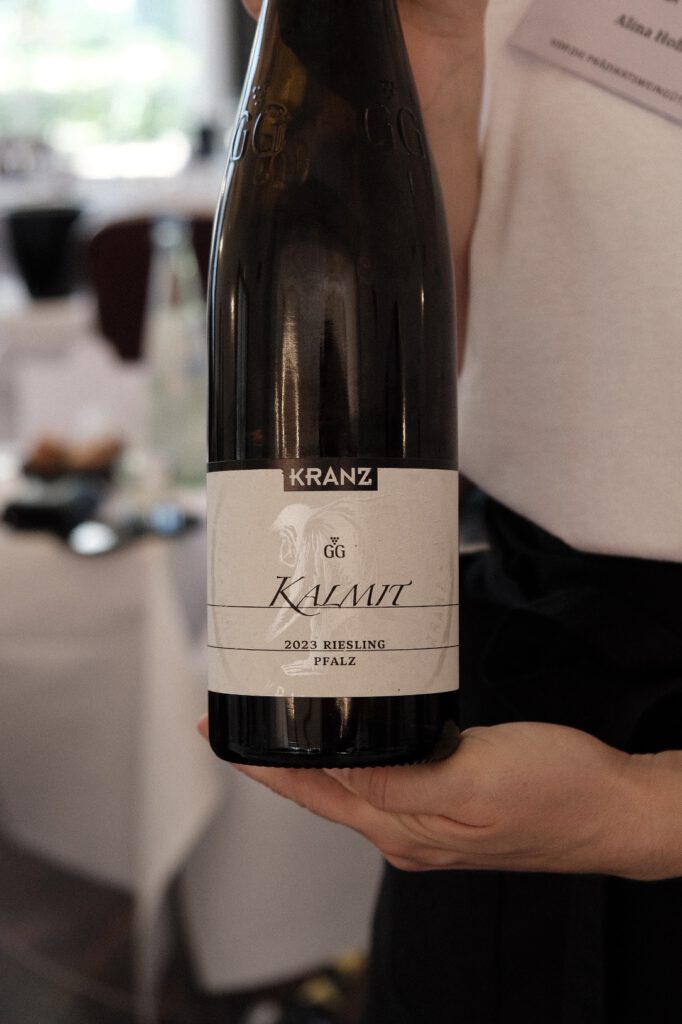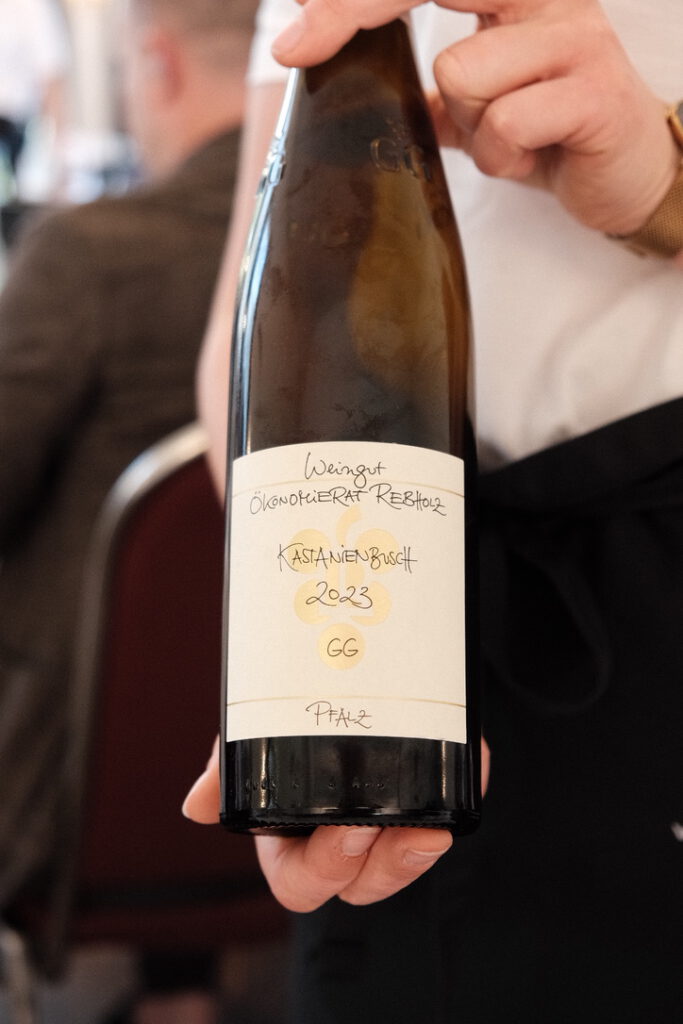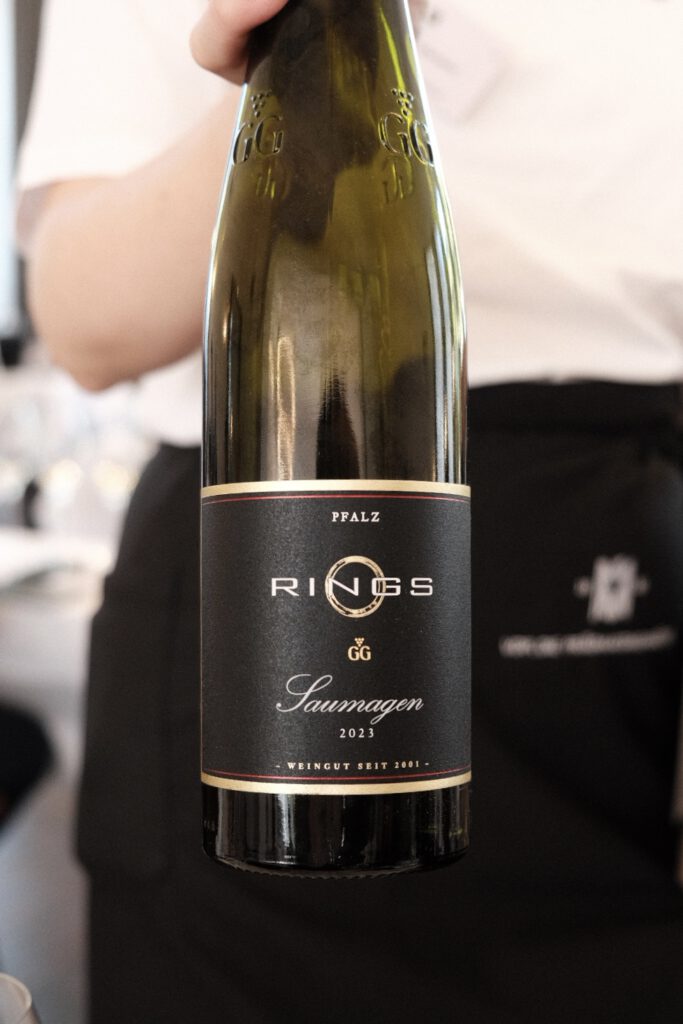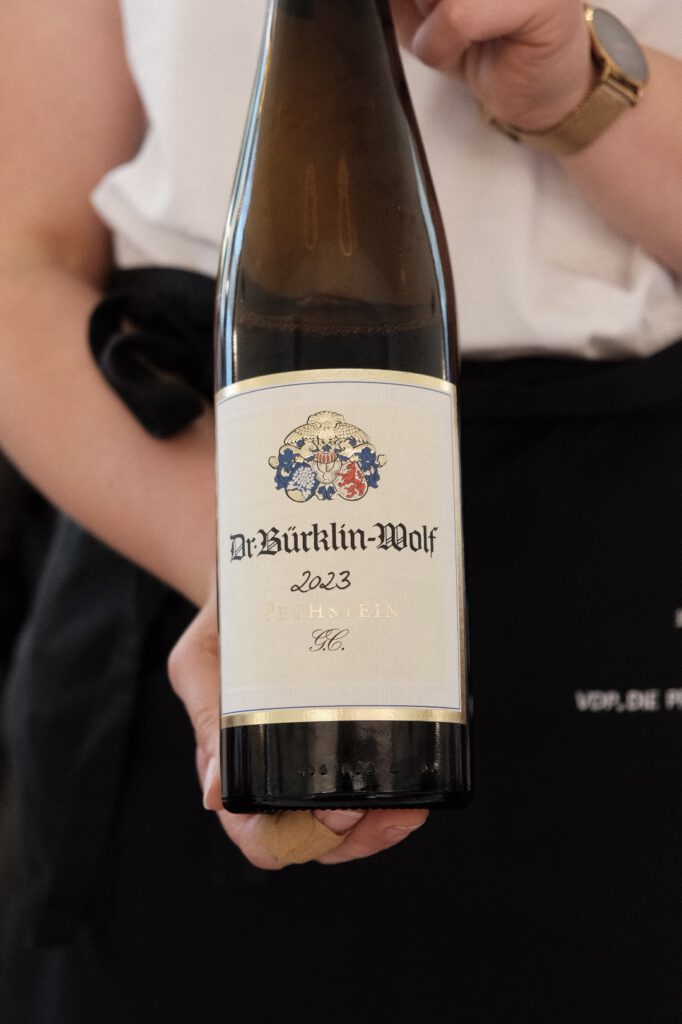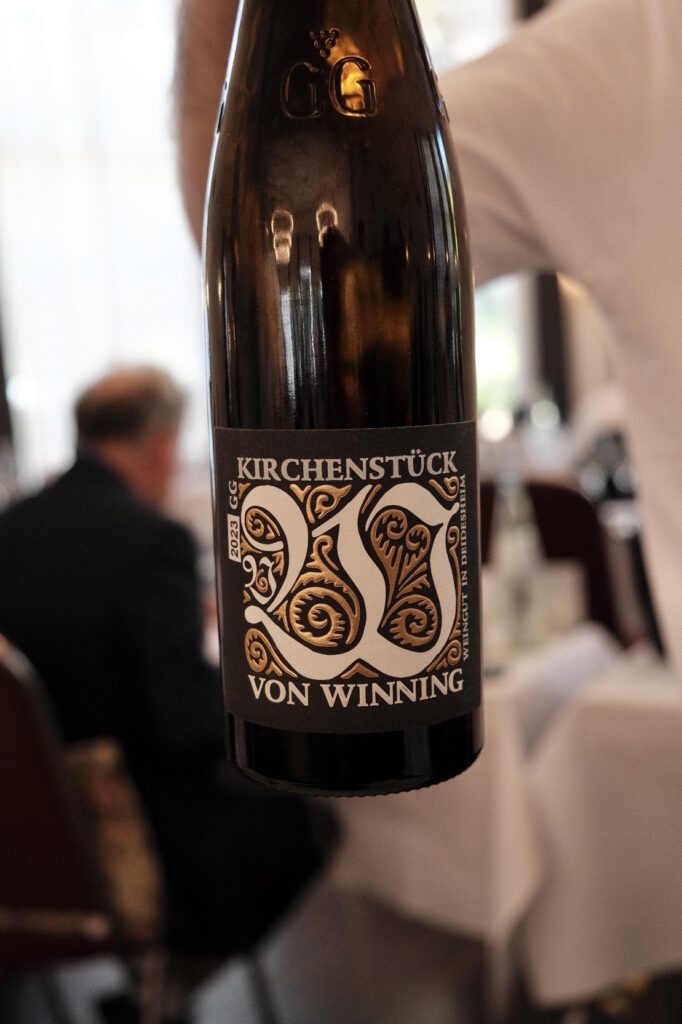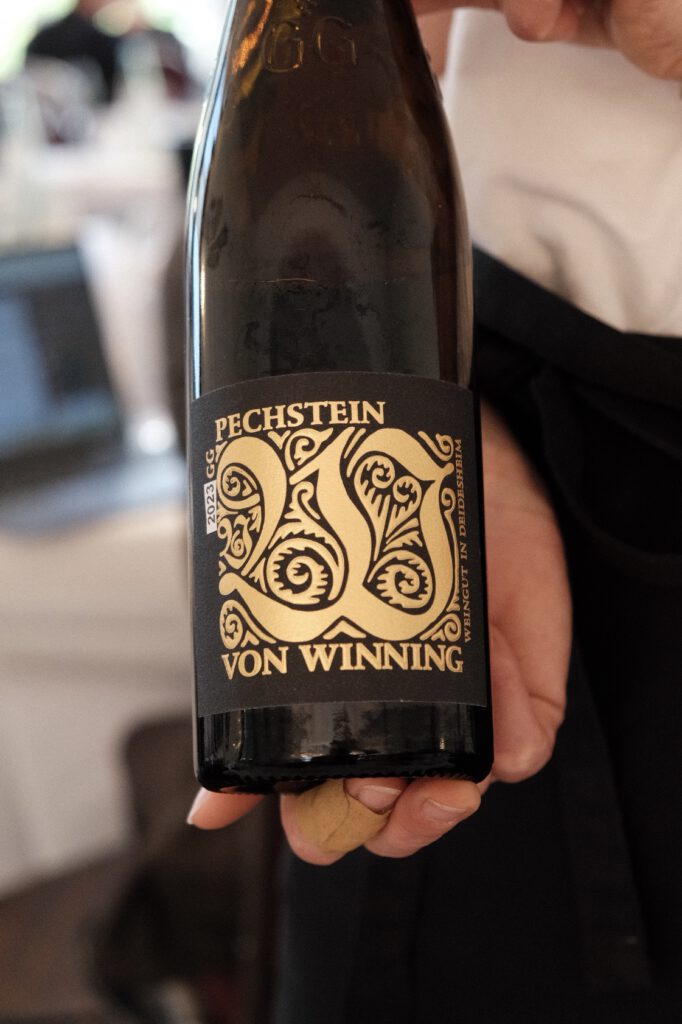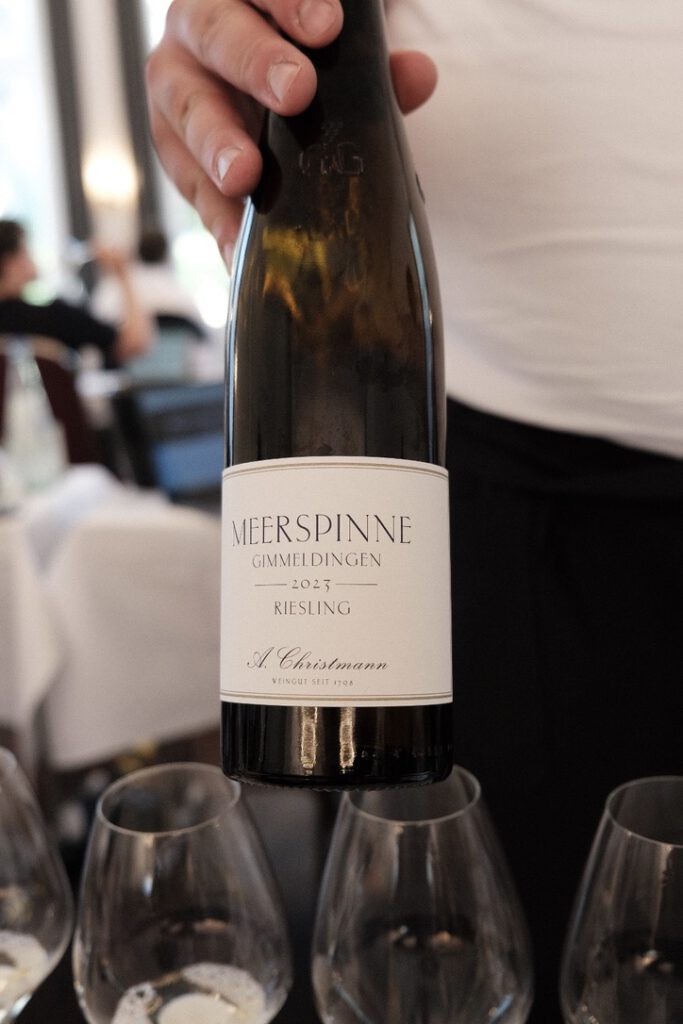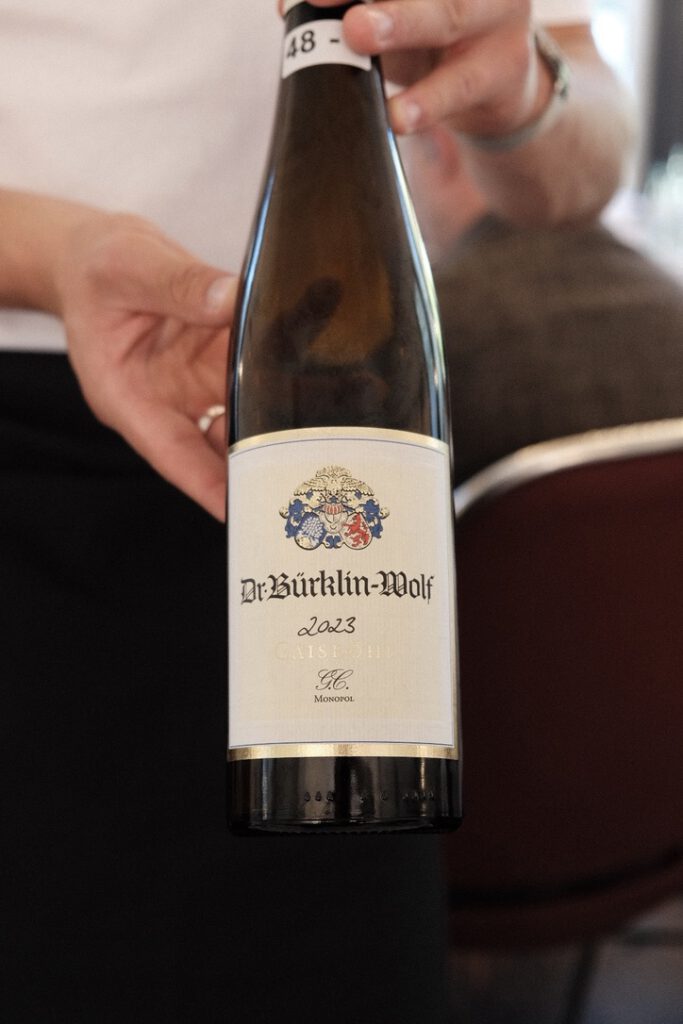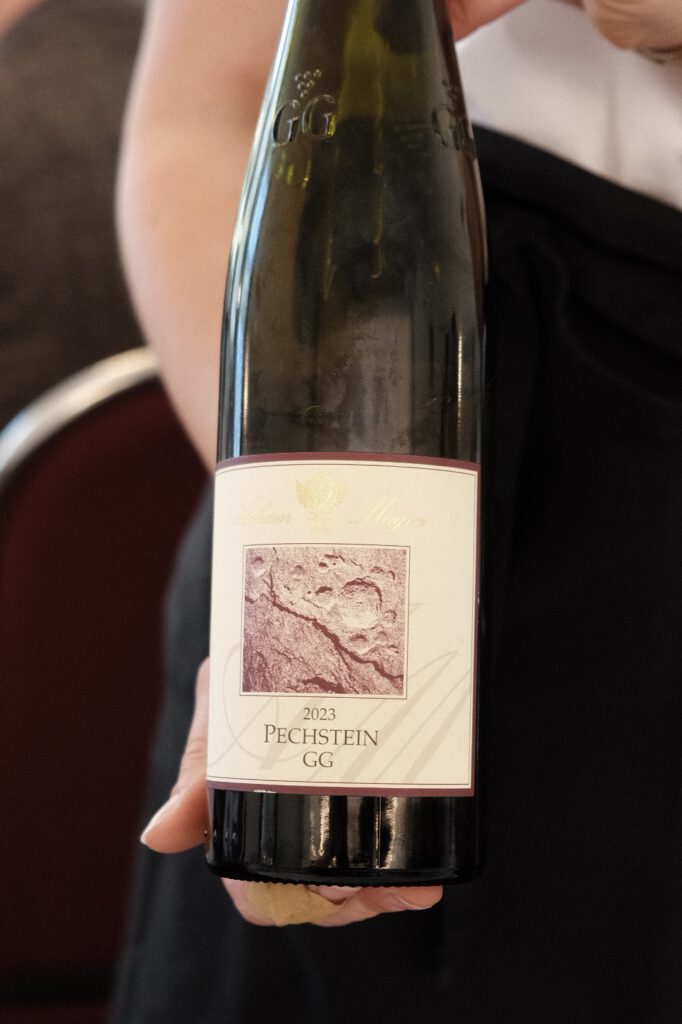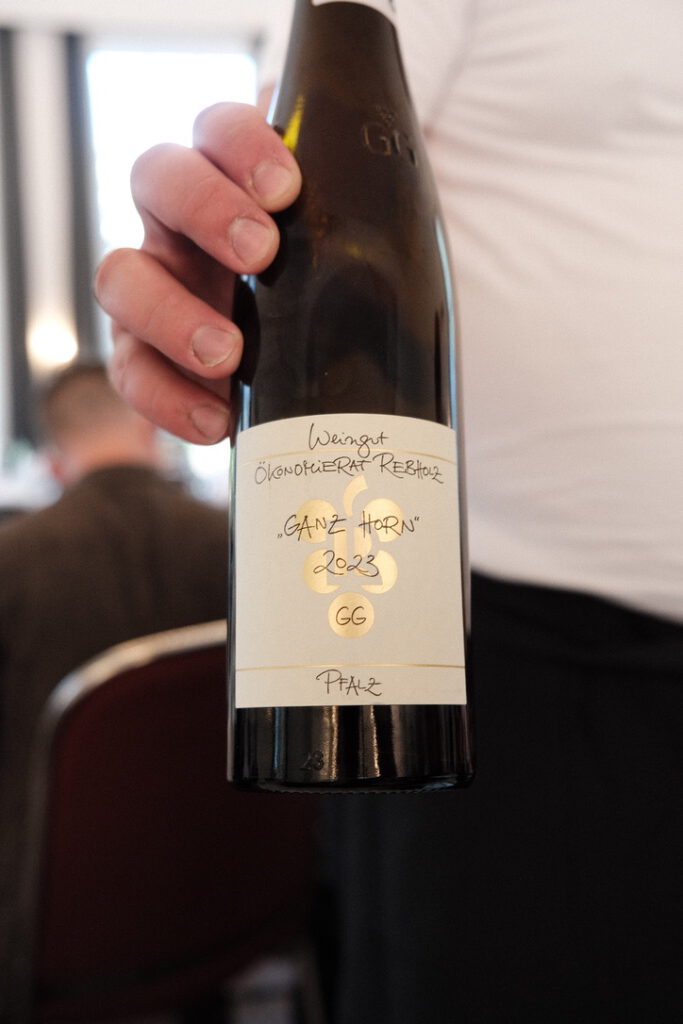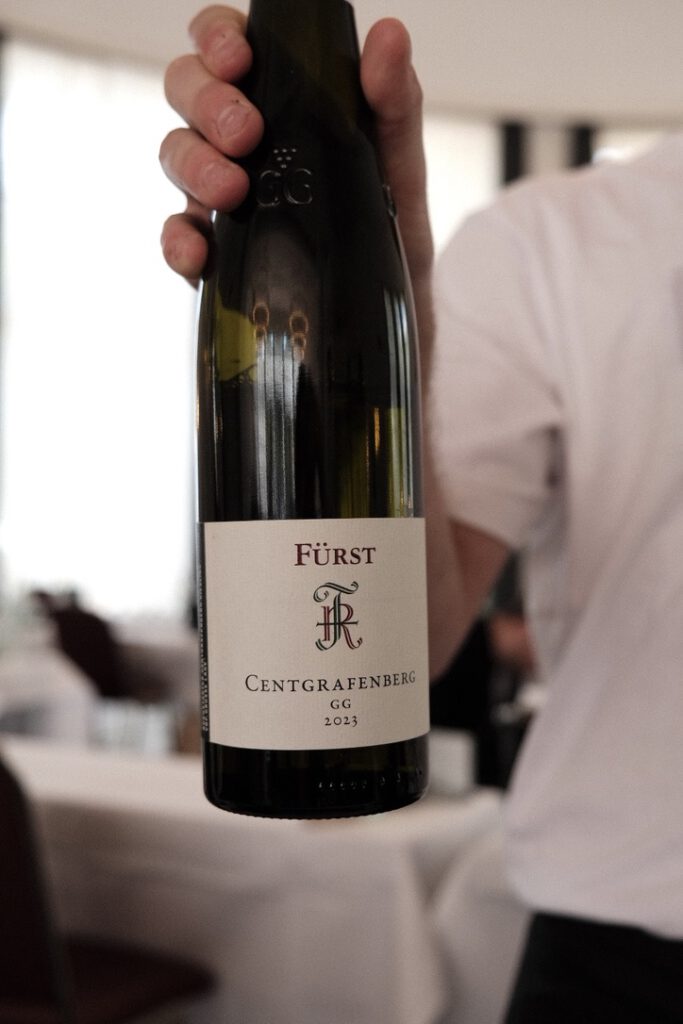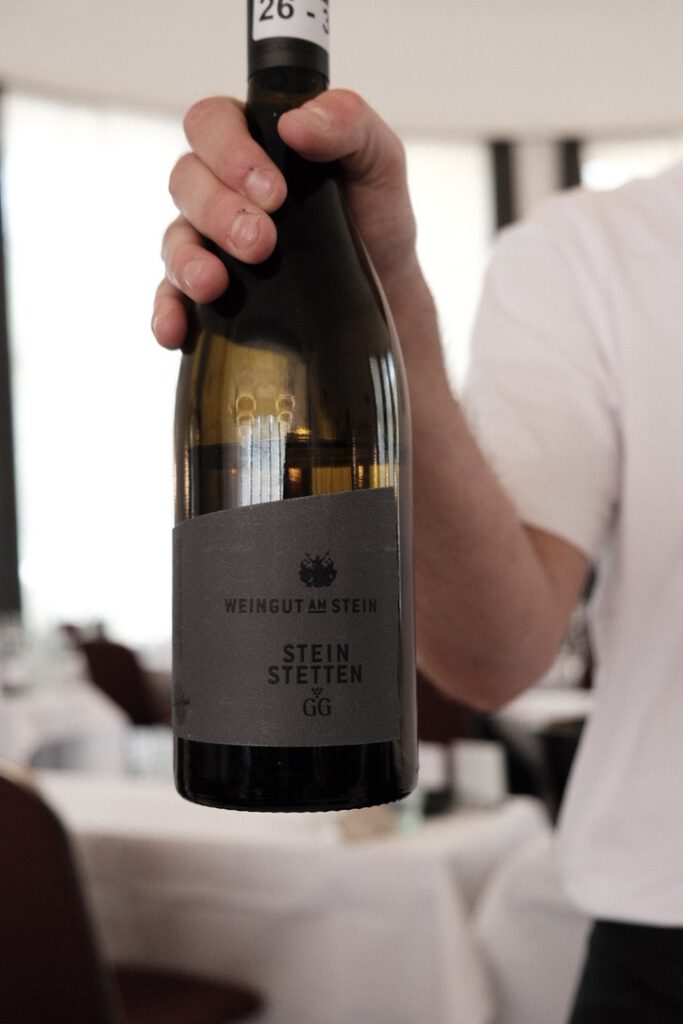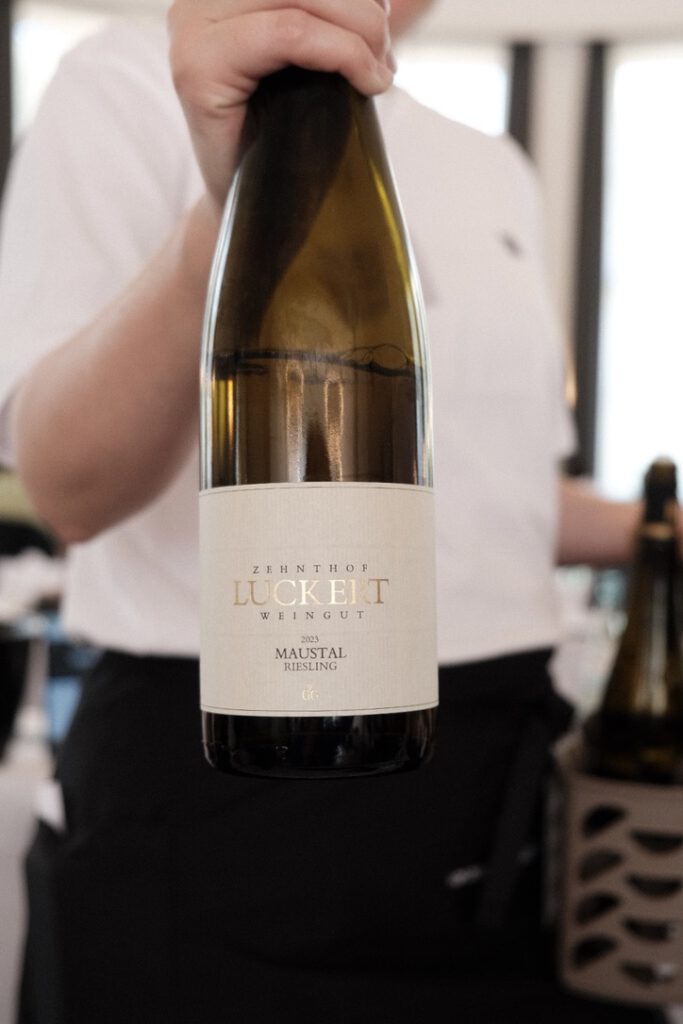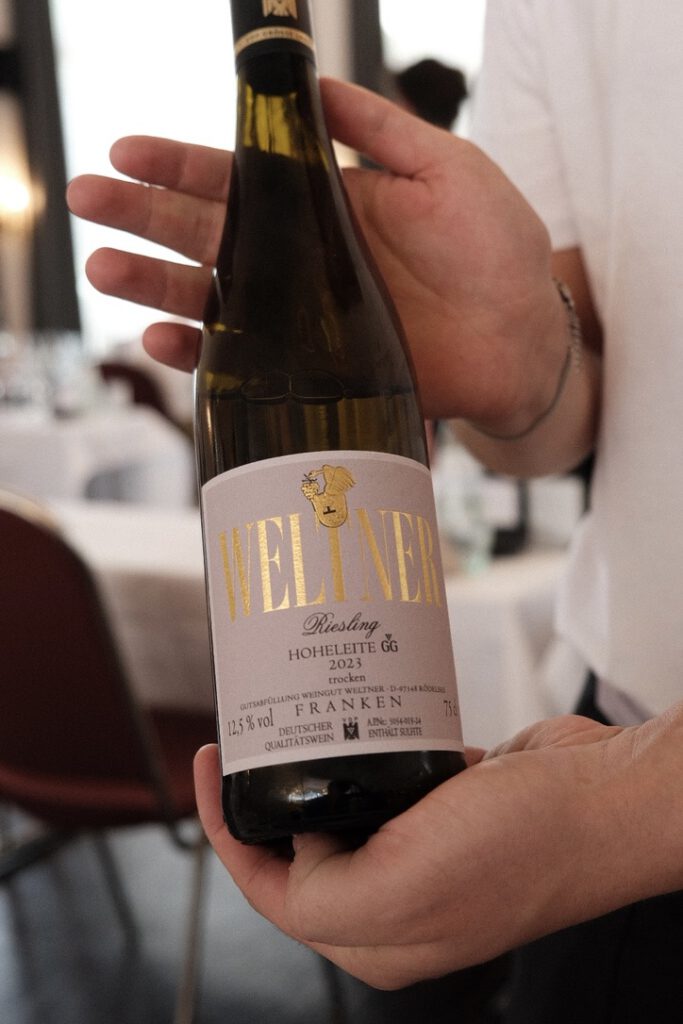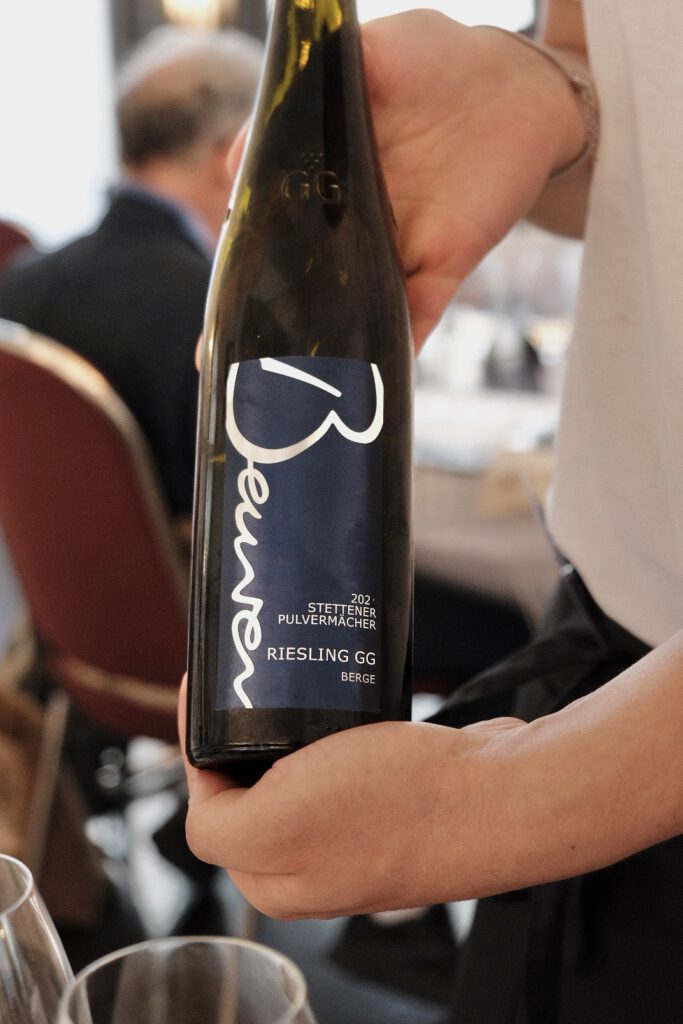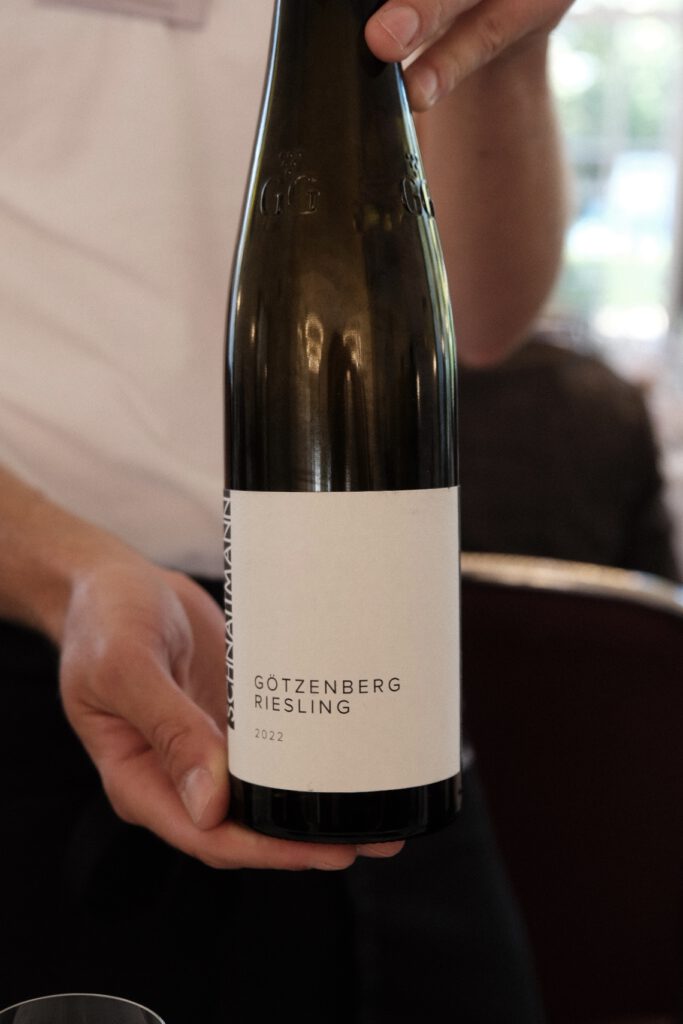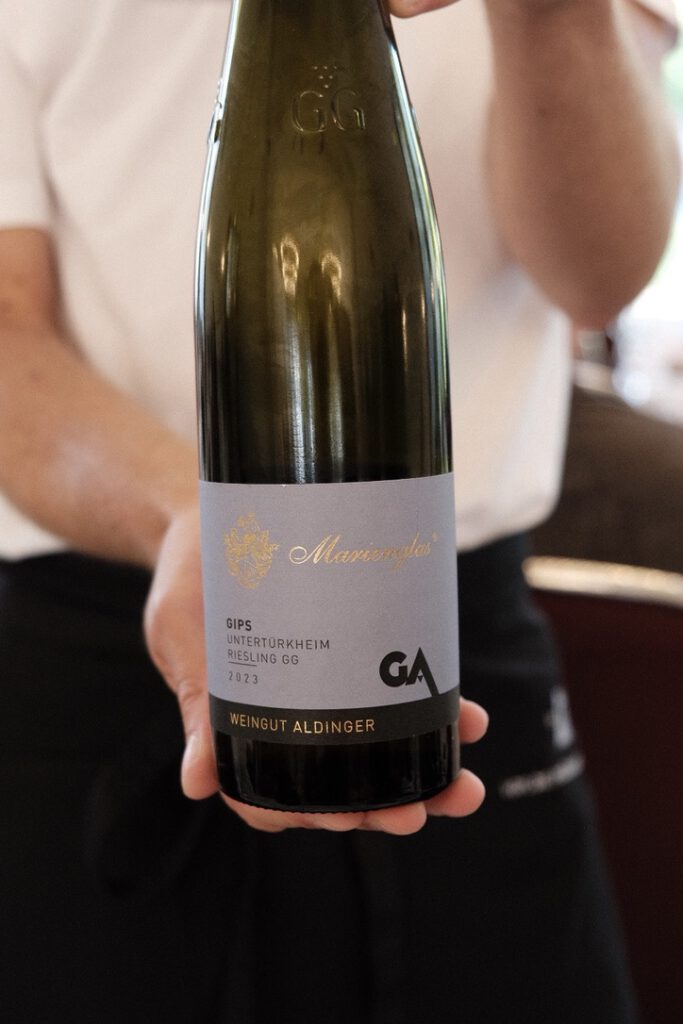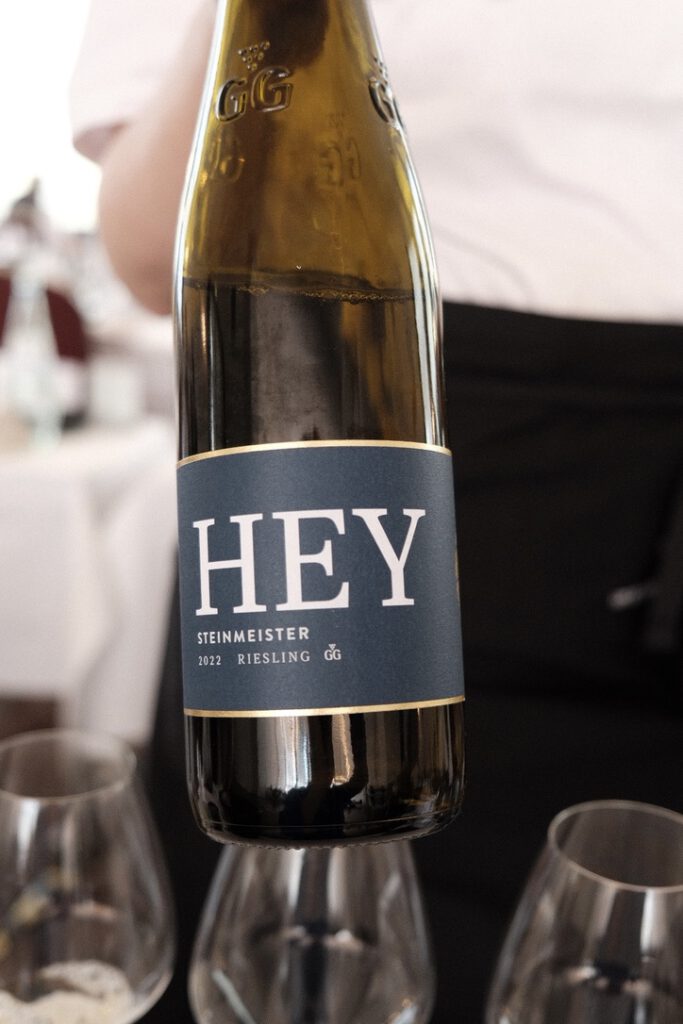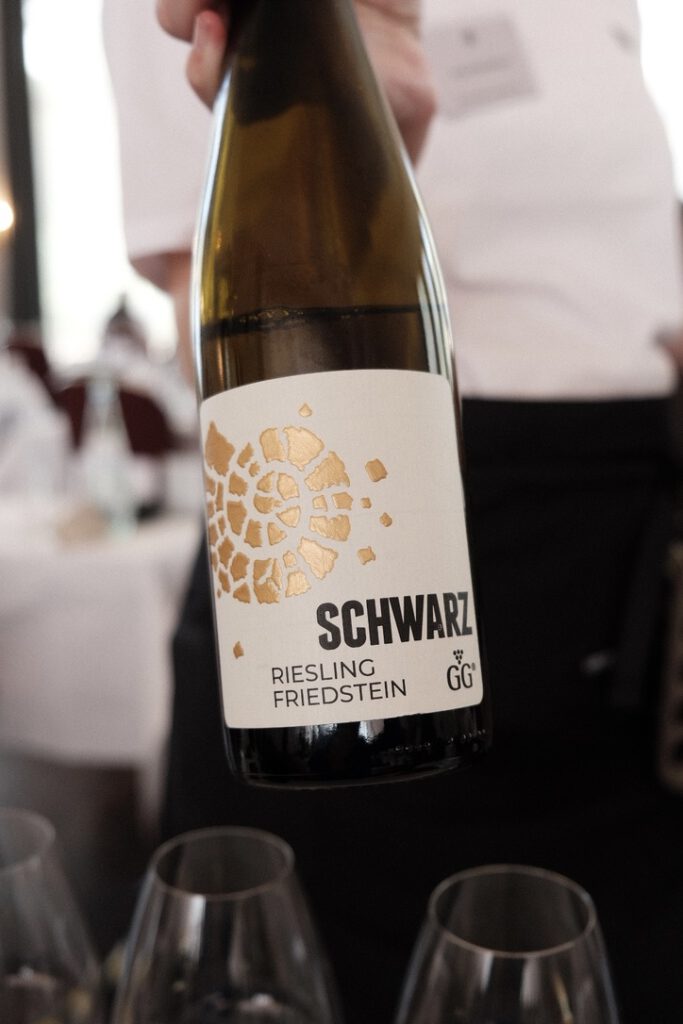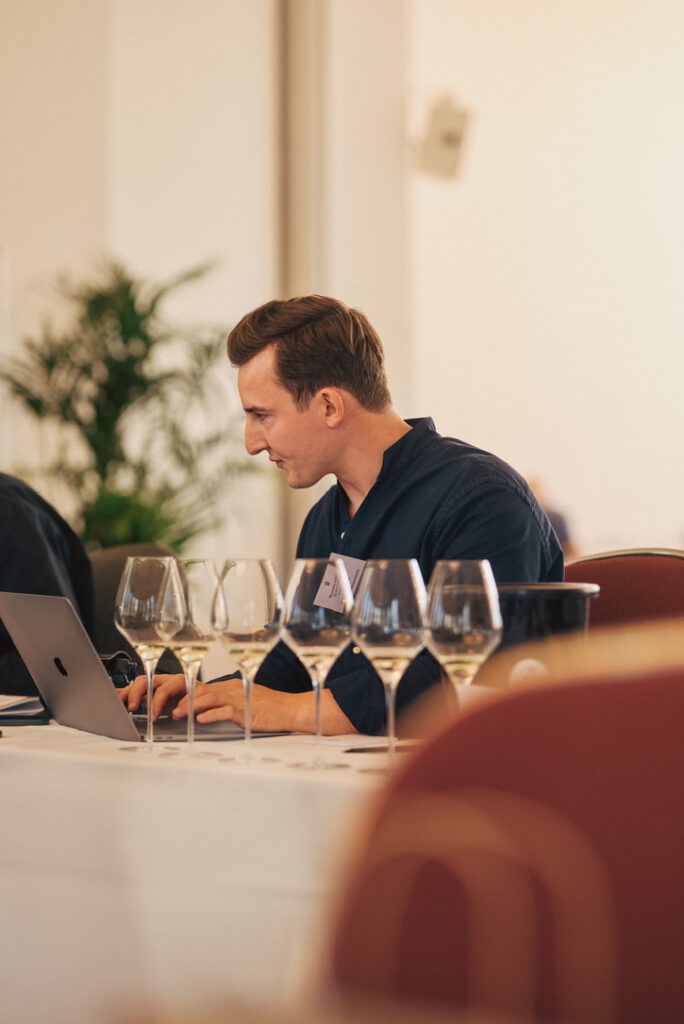Best Collection – Mosel
For me, the best collection from the Mosel this year was delivered by Van Volxem. A total of 10 GGs were presented – each with its own distinct character, yet unmistakably shaped by the house’s signature style. The wines consistently had a firm core, were spicy, elegant, with lively acidity and a wonderfully juicy finish. I especially want to highlight the Scharzhofberger P (Pergetsknopp): Dark spices meet freshly cut grapefruit. On the palate, it’s dense and complex, with vibrant acidity and a powerful, structured core. The spicy, salty finish is challenging. A truly great wine. I was also pleasantly surprised by the Geisberg. Producing a GG in the sixth year after planting was not well received by all tasters in Wiesbaden. I, too, was initially skeptical – after all, a certain vine age is almost a “requirement” for a GG. But Roman proved me wrong. Because, I was completely off the mark regarding the age of the vines. The GG comes from a parcel acquired only last year, which Van Volxem was missing for its monopoly. The vines are 30 years old. Ginger spice and grapefruit on the nose, and then linear and elegant on the palate, with racy acidity, a dark, spicy core, and a salty-juicy finish. Excellent. Not incredibly deep and long, but that would be an unfair expectation at this early stage. A debut that will bring great joy in the coming years.
Worth mentioning
I was equally impressed by Zilliken’s Rausch, which – once again – displayed a very distinctive sense of place. The slightly smoky nose carried through on the palate, complemented by lively acidity, ripe, cool fruit, and a spicy-salty finish. A beautiful balance and simply a pleasure to drink. Excellent. Maximin Grünhaus once again delivered an outstanding collection. Brudersberg, Herrenberg, and Abtsberg showed vibrant energy, with the typical Grünhaus spice, solid structure, gripping intensity, excellent balance, and juiciness. The Abtsberg particularly stood out this year – darker, more complex, and denser than usual, with a firm core, yet beautifully balanced. Salty, elegant, and with a certain majesty. A wine that deeply impressed me. Great. Clemens Busch also delivered consistently excellent quality, though his wines didn’t move me as much as they have in the past. And let’s not forget Fritz Haag. All three GGs were crystalline, quiet, delicate, light, and beautifully balanced.
